|
OVIDIUS.
P. Ovidii Nasonis Opera omnia in tres tomos divisa cum integris notis Nicolai Heinsii D.F. lectissimisque Variorum notis. Quibus non pauca ad suos quaeque antiquitatis fontes diligenti comparatione reducta accesserunt studio Borchardi Cnippingii.
Amsterdam Amstelodami Prostant apud Waesbergios Boom & Goethals 1702. 8vo. 3 volumes: XVI83216; 805101 blank; 8106 p. 15 plates 1 portrait 1 frontispiece & 2 engraved titles. Vellum 19 cm Ref: STCN ppn 320300935 ppn 320301095 & ppn 320301176; Schweiger 2631; Dibdin 2267/68; Moss 2343; Brunet 4272; Graesse 570; Ebert 15368 Details: Volume 1: an engraved portrait of Ovid and a frontispiece depicting the Judgment of Paris. Title with woodcut printer's mark depicting a celestial sphere flanked by Hercules and Father Time. Volume 2 & 3 have engraved titles depicting the abduction of Europa by Zeus 2 and a Roman emperor on horseback 3. Vol. 2 is adorned with 15 full page engravings. In this copy the index of usually 9 pages has been printed on 6 pages in smaller typeCondition: This nice set has 1 flaw: stains on the margins of 21 leaves of volume 1 and of 16 leaves of volume 2 caused by an attempt to remove ink annotations. Small red ink annotations on 7 pages of vol. 2. Vellum slightly soiled. Paper yellowing Note: The Roman poet Ovid 43 B.C. - 17 A.D 'is perhaps the most consistently influential and popular writer of the classical tradition. His central position is suggested by the many surviving manuscripts of his works and their early publication in printed editions. . Most would agree that it is his Metamorphoses that has had the greatest influence but his other major poems the Heroides Tristia Fasti and particularly his racier works the Amores Ars amatoria and Remedia amoris have played their part in maintaining his reputation as a writer of enduring importance and appeal'. The Classical Tradition Cambr. Mass. 2010 p. 667 � Ovid was widely read in antiquity and remained to be read at the Carolingian court in the Middle Ages. The 12th/13th centuries are even called the 'aetas Ovidiana' for Ovid's love elegy was one of the mainsprings of the phaenomenon of courtly love and its literary expression. His 'Ars amatoria' and the 'Remedia' became part of the school curriculum. Ovid became also the favourite poet of the Renaissance. Shakespeare was inspired more by Ovid than by Vergil. Neue Pauly 9110/119Ovid's appeal lies beyond the bounderies of the scholarly and literary world. Numerous artists in the 16th to 18th century were inspired by the Metamorphoses. � A new age dawns in the textual history of Ovid's poems with the work of the famous Dutch scholar neolatin poet and diplomat Nicolaas Heinsius 1620-1681 'who after 345 years remains the central figure in any account of the editing of Ovid. No modern editor will fail to mention his name in the preface as the 'sospitator Ovidii; no 'apparatus criticus' will fail to cite his numerous contributions to the improvement of the text'. P.E. Knox ed. 'A companion to Ovid' Chichester 2013 online version Heinsius' editions of Ovid offer texts that are based on an extensive first hand knowledge of the manuscripts and that are supplemented with a full textual commentary which records and discusses 'variae lectiones' and notes alterations of the vulgate text. In making his selection from the vast mass of variants Heinsius was according to Sandys guided by a fine taste and a sound judgment acquired by long experience. Heinsius was almost exclusively an editor of Latin poets. Sandys 2323/6 The first Ovid edition based on Heinsius that was produced by the Dutch schoolmaster Borchardus Cnippingius appeared in 1670. It saw reissues in 1683 and in 1702. Cnippingius included also observations of other leading scholars Collation: Volume 1: pi1 8 minus blank leaf 8 A-3G8 leaf 3G8 blank our gathering has one more leaf than the STCN copy. Volume 2: A-3E8. Binder's error in last gathering of volume 2: leaf 3E1 has been bound after the index. Volume 3: A-3E8. STCN calls for a gathering 3F2 at the end of volume 3. That is because in our copy the index of 9 pages has been boiled down to 6 pages in smaller type. The collation of our copy is therefore completePhotographs on request Heavy book may require extra shipping costs hardcover
书商的参考编号 : 130112
|
|
|
VERGILIUS.
Aeneas van Virgilius in Nederduitsche verzen door N.C. Brinkman Wed. C. van Streek.
Amsterdam Ter Boekdrukkerij van P.E. Bri�t 1815. 4to. Frontispiece VII1 blank; 688 p. Half calf 24.5 cm Ref: Geerebaert 14335; Not in OiN Details: Back ruled gilt. Engraved title designed and executed by L. Portman depicted is the Muse Terpsichore who holds in her left arm a 'cithara' in her right hand she holds a laurel wreath with which she crowns a bust of Vergil that stands on a pedestal. The translation is preceded by a 5 page verse dedication to William I the new king of Holland. After each of the 12 books of the Aeneid follow a few pages with 'Aanteekeningen' notes Condition: Binding very scuffed. Back rubbed and chafed. Head of the spine damaged. Paper on the boards gone. Front endpapers and title slightly soiled. Tip of both corners of the title torn off. Lacking as more copies the 8 page list of subscribers to this edition which was separately supplied by the publisher Note: This verse translation into iambic hexameters and heptameters was made by the Dutch author editor of several newspapers and translator Anna Naatje Catharina Brinkman widow of C. Streek 1760-1828. Not much is known about her school career but she was well versed in French German and Latin. She published an epistolary novel 'Eduard en Charles' 1791 and a novel 'Julius en Amalia of de Gevaaren van een al te gevoelig hart' 1805-1806. Her husband died young so she learned to earn her keep as an author newspaper woman and translator. She tried her pen as a playwright in 1795 the first year of the short-lived Batavian Republic which was declared after the ousting of the House of Orange with a play in verse 'De triumph der vryheid' at the end of which the whole cast exclaimed �vivat de natie! vivat de Fransen! vivat de vrijheid!� i.e. 'long live the nation long live the French liberators long live freedom!'. She was a supporter of Napoleon and his younger brother Louis who was king of Holland 1806-1810. Brinkman was a commercial writer who lend her pen after the fall of Napoleon and the ousting of the French without hesitation to the new rulers of the House of Orange. In 1806 she published a verse translation of the first 2 books of Vergil's Aeneid and in 1809 a complete translation. This was her most ambitious work. She proudly declared that she was the only woman who translated from Latin. For this feat King Louis Bonaparte awarded her 200 guilders for each of the 12 books. The translation was brought on the market for a second time in 1815 probably unsold copies. It is said that for this 1815 edition Brinkman herself sought to rope in subscribers. If this is correct she accomplished a tremendous job for on the 8 page list of subscribers which was loosely supplied by the publisher figure King William I and other members of the Royal House of Orange 13 copies and almost all the ministers of the government and hundreds of officials and dignitaries. Source: Brinkman Anna Catharina in: Digitaal Vrouwenlexicon van Nederland This achievement of roping in subscribers gets even bigger if we consider that the publisher must have had a store full of copies which had been printed 6 years earlier. He only added a new title the servile dedication of Brinkman to William I the new king of Holland and a list with subscribers. Brinkman from then on wrote quite a number of occasional poems for King William and his family which yielded her 'gratificati�n' and an allowance of 700 guilders a year. The number of Brinkman's biography in '1001 Vrouwen' is 580 Photographs on request hardcover
书商的参考编号 : 155327
|
|
|
Spurgeon C H
Third Series of Lectures to My Students. The Art of illustration: being addresses delivered to the students of The Pastors' College Metropolitan Tabernacle
Passmore & Alabaster London 1894. First Edition. Hardcover. Used; Good. Edition: First Edition. No dust jacket. Hinges weak. Previous owners annotations/highlighting. Printed date 1897. <p><i><strong>Fast Dispatch. Expedited UK Delivery Available. Excellent Customer Service. </strong></i> <br/><br/>Bookbarn International Inventory #3114924</p> Passmore & Alabaster, London hardcover
书商的参考编号 : 3114924
|
|
|
MOERIS ATTICISTES.
MOIRIDOS ATTIKISTOU LEXEIS ATTIK�N kai HELL�N�N kata stoicheion. Moeridis Atticistae lexicon atticum cum Jo. Hudsoni Steph. Bergleri Claud. Sallierii aliorumque notis. Secundum ordinem MSStorum restituit emendavit animadversionibusque illustravit Joannes Piersonus. Accedit AILIOU H�R�DIANOU PHILETAIROS. Aelii Herodiani Philetaerus e Ms nunc primum editus item ejusdem Fragmentum e MSS. emendatius atque auctius.
Leiden Lugduni Batavorum Apud Petrum van der Eyk et Cornelium de Pecker 1759. 8vo. IVLXVI248044 p. Half calf. 22 cm Ref: STCN ppn 240337786; Brunet 31788: 'Bonne �dition dans laquelle le texte a �t� r�tabli d'apr�s des manuscrits'; Graesse 4558: 'la meilleure �dition'; Ebert 14181: 'The best edition. A new recension from MSS. and restored to its original order'; Neue Pauly 8 col. 343/4: still the first listed edition Details: Back gilt and with 5 raised bands. Shield in the second compartment. Margins uncut Condition: Binding worn. Back rubbed. Boards chafed. Corners bumped. Foot of the spine slightly damaged Note: This edition is according to Klaus Alpers in the Neue Pauly 2001 s.v. 'Lexikographie' a very important contribution to Greek lexicography. NP 15130. Johannes Pierson was a much promising Dutch philologist born in 1731 who died young in 1759 in Leeuwarden where he was rector of the Schola Latina from 1755. At the university of Franeker where the Renaissance of Dutch Greek studies had begun he was a pupil of J.C. Valckenaer and Is. Schrader. In 1751 he matriculated at the University of Leyden to hear T. Hemsterhuis. Hemsterhuis advised his students to use especially the lexica of the ancients. The ancient lexicographers could be of great use for the amending of texts of classical authors and they were of great help to gain a profound knowledge of the Greek language and its vocabulary. Valckenaer chose Ammonius Pierson Moeris Atticistes. This was a great age for ancient lexicographers. In 1754 D. Ruhnkenius published his edition of the Platonic dictionary of Timaeus Sophista. Sandys 2461; NNBW 3 976/77; Gerretzen Schola Hemsterhusiana 1940 p. 46 & 100. � Moeris Moiris was a Greek grammarian and lexicographer from ca. 200 AD. He compiled a lexicon for the use of correct Attic under the title 'Lexeis Attik�n kai Hell�n�n kata stoicheion'. Examples of correct Greek are taken from Plato Thucydides Xenophon the Attic orators and Aristophanes. NP 8343/4. The last 50 p. of Pierson's edition are filled with the 'Editio Princeps' of the Philetaerus of Herodian. Nowadays this ancient lexicon is only ascribed to 'Aelius Herodianus et Pseudo-Herodianus' one of the most important Greek grammarians who lived in the 2nd cent. A.D. cf. NP 5465/6 Collation: -48 54 A-2I8 2K62 leaves of gathering Kk are bound in wrong order Photographs on request hardcover
书商的参考编号 : 130374
|
|
|
FABRICIUS JA. J. A.
Jo. Alberti Fabricii SS. Theol. D. & Prof. Publ. Bibliotheca Latina sive Notitia auctorum veterum latinorum quorumcunque scripta ad nos pervenerunt distributa in libros IV. Quintae huic editioni ab auctore emendatae accedit volumen alterum: supplementi loco separatim excusum.
Hamburg Hamburgi Sumtu Viduae Benjamini Schilleri & Jo. Christoph. Kisneri 1721. 8vo. XVI including the frontispiece924 recte 926 p. Half vellum 18 cm Ref: Schweiger 2 p. VII Details: This is the first of the three volumes of the 5th edition of the Bibliotheca Latina. The supplements the second and third volume are lacking. Engraved frontispiece it depicts discussing scholars before a building; above the door of the building an inscription: Biblioth. Latina. Title printed in red and black. Woodcut printer's mark on the title depicting a winged woman who consults a book beside her a globe or sphere and a Jacob's staff Condition: Binding slightly worn. Vellum age-toned. Small oval stamp on the title. Paper yellowing. On the back a removed label has left a non-discoloured rectangle Note: The late 17th century was for classical scholarship the age of epigones men who were more compilators than great scholars. Classical scholars started to produce often voluminous editions of Greek and Latin authors packed 'cum notis Variorum' others produced enormous surveys and summaries for instance classicists like Jacobus Gronovius who published his 13 volume Thesaurus Antiquitatum Graecarum 1697/1703 and Johannes Georgius Graevius who compiled a Thesaurus Antiquitatum Romanarum 1694-1699 in 12 huge volumes. Such processing of knowledge was only useful because 'sie literarische Zeugnisse f�r zahllose Einzelerscheinungen des antiken Lebens grosse und ganz geringe mit saurem Schweisse sammelte und nach Kr�ften ordnete'. U. von Wilamowitz-Moellendorff Geschichte der Philologie Lpz./Bln. 1921 p. 33 Wilamowitz perhaps the greatest classical scholar ever strongly disapproved of this kind of scholarship because Vielwisserei hampered progress. 'Wo das K�nnen immer schwacher ward galt das Wissen immer mehr Polyhistorie war das H�chste was man anstrebte. . Polymathie schafft keinen Verstand hat schon Herakleitos gesagt'. Op. cit. p. 34. A Polymath in the flesh was the German classical scholar and bibliographer Johann Albert Fabricius 1668-1736 a man 'von staunenswerthem Fleiss und unermesslicher Belesenheit' Bursian p. 360. He was a celebrated bibliographer and among the foremost among the German classical scholars of his time. His chef-d'oeuvre is the Bibliotheca Graeca a bibliographic survey of Greek literature 1705-1728. This work numbers 14 volumes. It displays an immense learning and supplied the basis for all subsequent histories of Greek literature. It's bibliographic data are still useful for classical scholars. His 3 volume Bibliotheca Latina 1708-1721 is on a more modest scale. Nevertheless it still is a useful work of reference. Its last edition of 1773-1774 is still consulted by scholars librarians and antiquarian booksellers and it is more than once repeated by later bibliographers like Schweiger Dibdin or Moss. Fabricius also produced a Bibliotheca Latina Ecclesiastica 1718 and a 5 volume Bibliotheca Latina Mediae et Infimae Aetatis 1734-1736. Johann Albert Fabricius began to teach on the Gymnasium at Hamburg in 1699 and remained there until his death. There he collected 'in stiller m�hsamer Einzelarbeit' his bibliographic material for Greek Latin Byzantine and Medieval Latin literature. The NDB does not speak of the suffocation caused by the compiling 'epigones' but is full of praise. 'Diese zuverl�ssige wohlgeordnete Sammelarbeit war unsch�tzbar nicht nur als Grundlage f�r die historische und kritische Arbeit der folgenden Generationen von Gelehrten sodern auch als Arsenal f�r unsere Klassiker'. NDB 4732/33 NDB concludes with the statement that Fabricius equals 'doch als Polyhistor von unwahrscheinlicher Fruchtbarkeit' the great Leibniz. Provenance: On the title the stamp: Bibl. Coll. Alumnorum. Which Collegium Alumnorum is meant is not clear Collation: pi1 8 minus leaf 8 = pi1 A-3M8 minus blank leaf 3M8 Irregular pagination in gathering E where the numbering of the pages 79/80 is repeated Photographs on request hardcover
书商的参考编号 : 120429
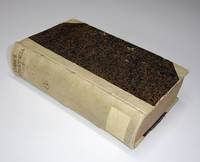
|
|
|
DIOGENES LAERTIUS.
Diogenis Laertii De vitis dogmatibus et apophthegmatibus clarorum philosophorum libri X. Graece et Latine. Cum subjunctis integris annotationibus Is. Casauboni Th. Aldobrandini & Mer. Casauboni. Latinam Ambrosii versionem complevit & emendavit Marcus Meibomius. Seorsum excusas Aeg. Menagii in Diogenem observationes auctiores habet volumen II. Ut & ejusdem syntagma de mulieribus philosophis; et Joachimi K�hnii ad Diogenem notas.
Amsterdam Amstelaedami Apud H. Wetstenium 1692. 4to. 2 volumes: XVI including the frontispiece672;VIII59055 index1 blank p.; 25 engraved plates. Mottled calf 26.5 cm Ref: STCN ppn 841722080; Neue Pauly Suppl. 2 p. 204; Hoffmann 1566; Brunet 2720; Ebert 6176; Graesse 2396; Moss 1400/01: 'excellent edition exhibiting the most correct and critical revision'; Dibdin 1503/04: 'most perfect edition. . by far the best edition'. The Classical Tradition Cambr. Mass. 2010 p. 272; Spoelder p. 556 Franeker 1 Details: Prize copy including the manuscript prize. Backs gilt with floral motives and with 5 raised bands. The back of volume 2 still has its brown morocco shield in the second compartment. The other shield has gone. Gilt lettering of both frontcovers: 'PRAEMIUM FRANEKERENSE SCHOLASTICUM MDCCCVII'. Engraved frontispiece depicting a bunch of philosophers including Pythagoras and the cynic Diogenes who are discussing in the court of a kind of 'temple of wisdom'; in the left corner sits Diogenes Laertius writing his account. � Both titles in red and black. Engraved printer's device on the title: a burin being sharpened on a whetstone Wetstein!; around it the device: 'Terar dum prosim'; this scene is flanked by a standing Hermes and Athena. Brunet and Hoffmann call for 24 plates our copy has 25 plates: Thales Solon Pittacus Anacharsis Socrates Aeschines Aristippus Euclides Plato Xenocrates Carneades Aristoteles Theophrastus Antisthenes Diogenes Monimus Chrysippus Pythagoras Archytas Heraclitus Zeno Democritus Sextus Empiricus Epicurus and at p. 56 'Aenea Virgo' Condition: The binding of the first volume is slightly worn at the extremities. Backs rubbed. Endpapers of both volumes are very worn. Volume I: the right margin of the greater part of the book block is slightly waterstained; the right outer margin of the first and last 15 gatherings is slightly stained and starting to become matted. Volume II: the head of spine is slightly damaged; the corners are bumped; the right margin of the second volume is waterstained throughout; the right edges of the leaves start occasionaly to become matted and are rather damaged Note: The 'Lives and Doctrines of the Philosophers' of the Greek author Diogenes Laertius who lived probably in the first half of the third century A.D. is still 'our best indirect source of knowledge for classical philosophy'. The 'Lives' comprises both a biographical and a doxographical account basically focused on Greek thinkers from the 6th to the 3rd century B.C. from Thales to Epicurus although references to schools and individuals extend to at least the 2nd century A.D.' The Classical Tradition Cambr. Mass. 2010 p. 271 Diogenes Laertius drew his material from earlier compilations and his doxographic account offers long excerpts from primary texts not transmitted elsewhere for example Epicurus' 'Principal Doctrines'. Diogenes' reliability and value differ from passage to passage. Some give invaluable information other passages offer mere caricature. His approach 'is not a systematic analysis but rather a eulogistic narrative of the course of ancient philosophy and of the four main classical schools the Academy Peripatetics Stoics and Epicureans. Anecdotal and perhaps largely apocryphal in nature still it gave to Renaissance humanists like Leonardo Bruni Machiavelli Erasmus et alii some conception of ancient philosophy especially of Platonic and Epicurean thought.' Ch.L. Stinger 'Humanism and the Church Fathers: Ambrogio Traversari 1386-1439 and Christian antiquity in the Italian Renaissance' Albany 1977 p. 71 � The 'editio princeps' was published in Basel in 1533. The Latin translation was published much earlier in Rome in 1472. This translation also appearing in this book was made by the Italian priest theologian and leading Hellenist of his time Ambrogio Traversari O.S.B. Cam. also known as Ambrosius Traversari or Ambrosius Camaldulensis 1386-1439. He was an exponent of the new humanism which was growing up within the church. This 1692 edition was produced by The Danish philologist Marcus Meibom or Marcus Meibomius born in 1630 in T�nning in Schleswig-Holstein. He was a scholar with a bad temper and a lot of ennemies. After a turbulent life he died poor in Utrecht in 1710 or 1711. He was one of those colourful people who despite numerous initiatives was unable to ascend in the Republic of Letters. Meibom treated everyone crudely and could never restrain his arrogance. The Dutch scholar Nicolaas Heinsius called him a 'hungry rogue' and an 'ungrateful person'. He was made royal librarian and professor at Uppsala in 1654. In 1668 he accepted a position at the Athenaeum Illustre at Amsterdam. One year later in 1670 he was fired. Modesty and humility were not his strongest points. � The first volume of this 1692 edition contains the Greek text of the author 'on the basis of the Roman edition of 1594 divided into sections and amended by Meibomius from former editions and a Cambridge and an Arundelian MS.; the text is succeeded by the Latin version of Ambrosius but so greatly improved and corrected by the present editor that it may be justly called a 'new one'. To each page are added the entire notes of Stephen Henry Estienne both the Casaubons Aldobrandini and the unpublished ones of Meibomius; . The second volume contains the long and learned annotations of M�nage Aegidius Menagius or Giles M�nage of Angers 1613-1692 and his 'Historia Mulierum Philosopharum' . To these succeed some very learned notes of Kuhnius never before published in which great light is thrown on many passages of Laertius; then follow some various readings from the Cambridge and Arundelian MS. collated with great care by Gale. . Beyond all doubt however this is by far the best as well as the most splendid edition extant of the author.' Dibdin This is also the first illustrated edition of Diogenes Laertius. It has 25 beautiful full page portraits of famous Greek philosophers and in the chapter on Cleobulus a fancy portrait of a 'Aenea Virgo' a bust with a sunny side and a dark lunar side. In the praefatio H. Wetstenius explains that he produced on the advice of Meibomius a text free from ligatures. � Of special interest is the section with short biographies of ancient women philosophers produced by the French scholar Aegidius Menagius. We quote concerning this section part of the abstract of an article of professor Richard Maber: 'The late work of Gilles M�nage 'Historia mulierum philosopharum' 1690 is a compilation of all the information that he could gather concerning women philosophers from earliest antiquity to the fourteenth century. It made little impact when first published but is currently the subject of renewed interest in the context of women's studies with recent translations into English French Italian and Spanish. However the work's true importance is much greater than has been realised. M�nage included it as he had always intended in his monumental and definitive edition of Diogenes Laertius's Lives of the Philosophers 1692 the greatest known source of information about the male philosophers of antiquity. M�nage's Historia thus became a supplement and corrective to Diogenes Laertius and was included with subsequent editions and translations of the irreplaceable Greek text. In this way the reality of women's capacity for the highest intellectual achievement was incontrovertibly established and women were integrated into the mainstream of the history of philosophy. An analysis . demonstrates how thanks explicitly to M�nage's work the role of women was now seen as crucial to modern intellectual life'. Maber Richard G. 2010. Re-Gendering Intellectual Life: Gilles M�nage and his Histoire des femmes philosophes. Seventeenth-Century French Studies 321: 45-60 Provenance: Including the manuscript prize for 'Joannes Stinstra'. The prize: 'Elegantis ingenii studiosissimumque litterarum iuvenem Ioannem Stinstra emenso itinero scholastico in Academiae stadia transiturum splendido hocce promotionis donarunt praemio Die XVII Julii Anni 1807. Amplissimi Gymnasii Franekerani Curatores'. Signed by 'H. Wassenbergh Gymn. Rector'. Hieronymus Wassenbergh was the son of the famous Franeker professor Everwinus Wassenbergh. He was born in in 1774 and was appointed rector in 1802 when his father still lectured at the local university. His salary was 700 guilders. He died in 1824. The parents of Johannes Stinstra 1789-1842 were members of the local elite of the Frisian city Harlingen. http://www.harlingerrijkdom.nl/fam/stinst.htm Johannes Stinstra was a nephew of the Frisian Mennonite preacher Johannes Stinstra 1708-1790 who achieved renown both in the Netherlands and beyond through his involvement in the dissemination of Enlightenment thought. Oxford Encyclopedia of Enlightenment article 'Johannes Stinstra' Our Johannes was a jurist and acted as justice of peace Collation: 1: - 24; a-4p4; 2: 4 a-4m4 leaf 4m3 verso blank; 4m4 blank; Photographs on request Heavy set may require extra shipping costs hardcover
书商的参考编号 : 140004
|
|
|
FLORUS.
Abr�g� de l'Histoire Romaine de L.A. Florus. Traduction nouvelle avec des notes par M. l'Abb� Paul professeur d'�loquence au Coll�ge d'Arles.
Paris Chez les Fr�res Barbou 1794 - 1795 L'An III de la R�publique Fran�aise 12mo. IV384 p. Modern half calf. 18.5 cm Ref: This edition not in Schweiger and Brunet; however cf Schweiger 2366; cf Brunet 2/21312; cf Ebert 7698 Details: Latin text with facing French translation. Back with five raised bands; marbled boards marbled endpapers. Only the upper margin has been cut Condition: Small bookplate on the front pastedown. Small waterstain in the right lower corner and the left inner corner of the first 30 p. Paper yellowing Note: This is the chief work of the Roman historian Lucius Annaeus Florus who lived at the beginning 2nd century AD. It is an abridgement epitome of Roman history with special reference to the wars waged up to the age of Augustus. Florus 'shows a certain literary gift marred however by a strong tendency to rhetoric. His brevity often entails obscurity though he sometimes produces a felicitous epigram. . As an historian he is often inaccurate in both chronology and geography but the work as a whole achieves a limited success as a rapid sketch of Roman military history. It was a favourite school-book in the 17th century'. OCD 2nd ed. p. 442 The Abb� Armand-Laurent Paul 1740-1809 was a French jesuit and grammarian. He wrote a number of scholarly works; the first Barbou edition of his Florus together with his notes and translation dates from 1774 Brunet 22 p. 1312. The edition of 1774 is common the edition of 1794 is rather rare. The translations by Paul are said to be trustworthy but dry Provenance: Bookplate of the Belgian ancient historian and archaeologist Marie Ther�se Charlier on the front pastedown Collation: pi2 A-Q12 Photographs on request hardcover
书商的参考编号 : 120404
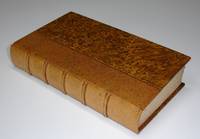
|
|
|
Lang Theodore
Cost accountants handbook.
The Ronald Press Company 1944. Hardcover. Used; Good. No dust jacket. <p><i><strong>Fast Dispatch. Expedited UK Delivery Available. Excellent Customer Service. </strong></i> <br/><br/>Bookbarn International Inventory #3029192</p> The Ronald Press Company hardcover
书商的参考编号 : 3029192
|
|
|
Cross Stitch Collectibles
Woman with a Towel: Degas Cross Stitch Pattern
2017-10-19. Good. Ships with Tracking Number! INTERNATIONAL WORLDWIDE Shipping available. May not contain Access Codes or Supplements. May be re-issue. May be ex-library. Shipping & Handling by region. Buy with confidence excellent customer service! unknown
书商的参考编号 : 1978428588 ???????? : 1978428588 9781978428584
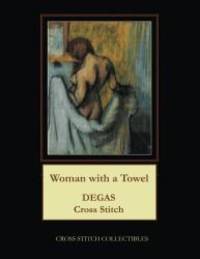
|
|
|
HOMERUS.
HOM�ROU ODUSSEIA. Homeri Odyssea. Eiusdem Batrachomyomachia Hymni aliaq.; eius opuscula seu catalecta. Omnia graece & latine edita quam emendatissime. Cum praefatione scholiis & indice D. Giphanii.
Strassburg Argentorati Excudebat Theodosius Rihelius n.d. 1572 8vo. 82752 notes & index 1 blank p. Overlapping vellum 18 cm Ref: VD16 ZV 22787; Hoffmann 2317; Schweiger 1157; Ebert 9960 Details: Boards with blind-stamped double fillet borders; elaborate floral motive stamped in the center of the boards. Oval woodcut printer's device of Rihel on the title depicting an emblematical representation of a winged and bare breasted Nemesis holding in her right hand the reins bid and bridle of a horse and in her left a carpenter's square; Nemeis punishes excess. Greek text with opposing Latin translation. The German jurist and classical scholar of Dutch origin Hubertus Obertus Giphanius Gifanius van Giffen 1534-1604 added a preface of 19 pages 16 pages notes of his own and compiled the index Condition: Vellum worn spotted and soiled. Lacks all 4 ties; pastedowns detached. Ownership entry on the title. A few small inkstains. A pinpoint and not disturbing wormhole very near the outer margin of the first 14 gatherings Note: The editor of this edition of the Odyssea adopted the Greek text which was previously published by the French scholar/printer Henri Estienne Henricus Stephanus in his 'Poetae Graeci Principes heroici carminis & alii nonnulli' of 1566 including his short remarks printed in the margins. � For the accompanying Latin translation the editor chose one that was published by Johannes Crispinus Jean Crespin in Geneva in 1567 the best of that time and more according to humanist taste. 'Given the subordinate position of the Greek language in Latin-based culture of the Renaissance the literal Latin versions printed 'e regione' i.e. on the left hand side opposite the Greek text in Renaissance editions from the mid-sixteenth century onwards were indispensable aids . offering a close literal key to the original for those whose Greek was poor or who were learning the language in schools and universities'. R. Sowerby 'The Homeric 'versio latina'' in 'Illinois Classical Studies' Vol. 21 1996 p 162 Yet many early humanists despised the 'ad verbum' Homer translation which Leontius Pilatus made for Petrarca. The next translation was also extremely literal and was made by Andreas Divus Andrea Divo. It was at its appearance in 1537 immediately criticized by Melanchthon and Camerarius. They argued that it was impossible to learn Greek with corrupted Latin and that the translation should be shunned like the plague. Idem p. 177 In the preface to the 1567 edition Crispinus states that 'he has taken great pains to see that the version is more correct than in previous editions'. Idem ibidem He refers to them as 'horridum et spinosum'. 'How poorly the Latin words correspond to the Greek' he adds. He then claims to have provided a version that while following the original closely is neither obscure nor disagreeable having made use of the work of a scholar who has examined the better versions and made corrections of his own. Idem p. 178 A comparison shows that many of the awkwardly unidiomatic expressions have been eliminated. � VD16 gives 3 editions of Rihelius with exactly the same title no. VD16 ZV 22787 of 1572 VD16 H 4699 of 1588 and VD16 H 4700 of 1592. We compared the digital copies. Our copy is that of 1572 including the huge printer's error in the heading of the introductory letter on page 3 GFNEROSO instead of GENEROSO Provenance: In ink on the title: 'Hadr. Visscherus'. The owner was once Hadrianus Visscherus protestant minister at Oude Nieudorp 1599-1666. An engraved portrait of him dates from 1673. See: geheugenvannederland.nl//nl/items/VUMCC01:RMCC-G00395 He was a theologian well versed in Latin and Greek. In his publications he returns to the Greek sources and there are many citations of pagan Greek and Latin authors Aristotle Homer Seneca Ovid Horace Vergil and many others. He is also familiar with the original texts of the Church Fathers he cites from Chrysostomus Athanasius Cyprianus Tertullianus Hieronymus and especially Augustinus. Google type 'Digibron' and 'Visscherus' Collation: 8 A-3H8 leaf 3H8 verso blank Photographs on request hardcover
书商的参考编号 : 130098
|
|
|
HIERAKOSOPHION.
HIERAKOSOPHION. Rei Accipitrariae scriptores nunc primum editi. Accessit KUNOSOPHION. Liber de cura canum. Ex biblioth. Regia Medicea. Hoc volumine continentur 'Demetrii Constantinop. de re accipitraria liber a Petro Gillio latine redditus; Alius liber de re accipitraria latine redditus ab eodem P. Gillio; Libellus de cura canum latine versus ab Andrea Aurifabro Vratislavienssi medico; Epistola Aquilae Symmachi et Theodotionis ad Ptolemaeum regem Aegypti de re accipitraria catalanica lingua; De diversis generibus falconum sive accipitrum . Ex libro incerti auctoris De Natura Rerum; Jacobi-Augusti Thuani de re accipitraria libri III; Hier. Fracastorii Alcon sive de cura canum venaticorum Edidit N. Rigault
Paris Lutetiae Typis Regiis excudebat C. Morellus 1612. 4to. 3 parts in 1 volume: XVI27816 index2 blank; XII2111 blank;120 pages. 18th century mottled calf 23.5 cm. 'Editio princeps' of some Byzantine treatises on the art of falconry and hunting with dogs together with similar texts on hunting. Ref: J.E. Harting 'Bibliotheca Accipitraria' London 1891 no.s 316 & 327 & 223; Schweiger 1358; Hoffmann 1500; Brunet 5244/45: 'Recueil recherch� et dont les exemplaires sont rares'; Graesse 6/1331; Ebert 5916 Details: Back gilt and with 5 raised bands; a gilt ducal crown with 5 strawberry leaves in 5 compartments and a brown morocco title label in the second compartment. Boards with gilt double fillets gilt sides and gilt inside dentelles. Marbled endpapers. Edges dyed red. Woodcut printer's mark on the title a serpent climbing in a plant. Of this edition there are also copies with the imprint: 'Sumptibus Sebastiani Cramoisy' and 'Sumptibus Hieronymi Drouart'. The only difference being the printer's mark Condition: Binding slightly worn. Spine faded and some gilt worn away. Upper joint weak and cracking. Bookplate on the front pastedown. Small tear in the innermargin of the second and third leaf. Else a fine copy Note: This edition contains 7 texts 5 of them devoted to the catching nursing and training and the health of birds of prey such as hawks and falcons for the hunting of small game and 2 texts devoted to hunting-dogs. They were collected and edited by the French classical scholar Nicolaus Rigaltius or Nicolas Rigault 1577-1654 who was employed in the Biblioth�que Royale from 1604. The first part p. 1-278 contains a Greek corpus of 3 treatises from 2 manuscripts in the Biblioth�que Royale. All 3 are attributed to the Byzantine scholar and perhaps court physician of the emperor Michael VIII Palaeologus Demetrius Pepagomenus Constantinopolitanus 1200-1300 since they all have the name of Demetrius Constantinopolitanus at the commencement. The first 2 treatises are 'editiones principes' they are on hawks accipitres in Latin hierakes in Greek. A Latin translation of these 2 treatises was published previously by the French scholar Pierre Gilles Lyons 1562 1565 with the 'Historia Animalium' of Aelianus. � 'The treatise commences by teaching how and when hawks are to be caught; how to choose one; how to distinguish the different kinds; how to tell whether a hawk is sick or in good health; how to tame and train them; and concludes by an enumeration of the various diseases to which hawks are supposed to be liable with the remedies prescribed. These recipes were apparently copied from older MSS. for the author in his first chapter states that not a few wise men had already written on this part of the subject. The details which he gives of the methods of catching and training hawks in Greece in his day the middle of the thirteenth century are interesting as showing the antiquity of some of the practices well known to modern falconers. The capture of the birds was effected from a hut in which the falconer was concealed and from which he let out decoy pigeons on taking which the hawks themselves were seized. Another plan was for the falconer to extend himself at full length upon the ground covering himself with grass and fluttering a pigeon to attract the hawk which he grasped by the legs as soon as the pigeon was taken. Hawks were also captured by pegging down a live pigeon in the midst of limed twigs or in a net suspended from a tree in front of which was tethered a live fowl or pigeon. As soon as taken the hawk was enveloped in a linen 'sock' . and kept thus for a day or two until the taming commenced. It was then placed in a dark room on a perch to which it was attached by jesses and the perch had a linen curtain depending from it as at the present day. . The principles of training were the same then as now but it seems that the hawks were only flown from the hand and were not put upon the wing before the game was sprung. They were flown at partridges pheasants and wild-ducks the falconer running quickly towards the quarry and putting it up with a shout or in the case of wild fowl by beating a drum. In the latter case says the author the hawk did not carry bells. Each hawk was flown three or four times a day. It is remarkable that no mention is made of the hood which was first introduced into Europe by Frederick II who had learnt its use from Arab falconers when in the East. On the other hand the use of the curtain was known to the Greek falconer'. Harting no 327 � In the third treatise 'On hunting-dogs' the 'Cunosophion' Pepagomenos drew on Arrian's 'Cynegeticus'. It was published and translated into Latin by the German Andreas Aurifaber Goldschmidt Wittenberg 1545. A. Diller 'Demetrius Pepagomenus' in 'Byzantion' vol. 48 no. 1 1978 p. 35-42 These 3 works of Pepagomenus are among the principal monuments which remains of the technical literature in Greek devoted to the use and care of birds and hounds and are an important source of information about language methods and the practioneers of a branch of the veterinary art. It provides evidence of popular beliefs and was in the Middle Ages and Renaissance viewed as object of antiquarian interest but also as a source of practical advice. These 3 Byzantine texts were published by Rigault from a manuscript in the Royal Library at Paris. � The first 182 pages of the second part are filled with the above mentioned Latin translations of Gilles and Goldschmidt. � The pages 183-211 contain a Catalan translation of a letter that was supposed to have been written by the Jewish Hellenistic scholars and Old Testament translators Symmachus Aquila of Sinope and Theodotion to king Ptolemaeus of Egypt 'Lo libre dell nudriment he de la cura dels ocels los quals sepert�ye ha cassa'. Rigault added this peculiar Catalan translation because 'haud pauca contineat rei accipitrariae praecepta utilia'. p. � verso The original Latin manuscript has been lost and the treatise is now only known through the version in 'lingua Catalanica' printed here by Rigault. Harting no. 223 � The third and last part begins with a Neolatin poem in hexameters on falconry written by Jacques-Auguste de Thou 1553-1617 the superior of Rigault at the Royal Library. The author historian and politician De Thou first published this poem the 'Hieracosophion sive De Re Accipitraria Libri Tres' in Paris in 1584. He wrote it after a trip with his friend Pierre Pithou through the Languedoc and Provence where they witnessed hunting with trained birds of prey. See Harting no. 306 Rigault added also another short hexametric poem of De Thou 'Somnium' which he dedicated to Philippe Hurault Comte de Cheverny his brother in law. It was first published in Paris in 1587 when Hurault was chancellor of France 1583- 1588. It has nothing to do with birds or dogs. � At the end p. 114/120 we find a hexametric poem on the training of dogs for the hunt of the famous Italian Renaissance poet Girolamo Fracastoro latinized as Hieronymus Fracastorius 1476/1478-1553 'Alcon sive de cura canum venaticorum' 'Alcon or: how to take care of dogs for the hunt'. Hunting with dogs was Fracastoro�s favorite pastime Provenance: Bookplate of 'the Library of St. Benedict's Abbey Fort Augustus Scotland'. Below this a small shelf label. Fort Augustus Abbey properly St. Benedict's Abbey at Fort Augustus Inverness-shire Scotland was a Benedictine monastery from late in the nineteenth century to 1998. The building was sold. The Library was sold at auction at Christies in 2001/2003. This title was auctioned in 2001. See Wikipedia 'Fort Augustus Abbey' Collation: �4 �4 A-Z4 Aa-Oo4 leaf Oo4 blank; 4 2 A-Z4 Aa-Cc4 Dd2 leaf Dd2 verso blank A-P4 Photographs on request hardcover
书商的参考编号 : 153425
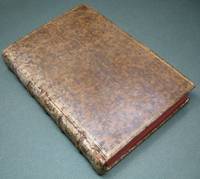
|
|
|
GELLIUS.
Auli Gellii Noctes Atticae seu Vigiliae Atticae quas nunc primum a magno mendorum numero magnus veterum exemplarium numerus repurgavit. Henrici Stephani Noctes aliquot Parisinae Atticis A. Gellii Noctibus seu Vigiliis invigilatae. Eiusdem H. Stephani annotationes in alios Gellii locos prodibunt cum notis Lud. Carrionis qui vet. exemplaria contulit prelo iam traditis.
Paris Parisiis H. Stephanus 1585. Cum privilegio Caesaris et Gallorum regis in decennium. 8vo. VI231 blank5871 blank;74 index2 blank2053 blank p. Vellum 18 cm Ref: Renouard p. 450/51 15852: '�dition rare et estimable' Schweiger 2378; Brunet 1523/24; Graesse 346; Ebert 8284 Details: 5 thongs laced through both joints. Short title on the back Condition: Vellum soiled and spotted big red stain on the lower board. Occasional old ink underlinings & marginalia. Small and old inscription on the verso of the front flyleaf. A small reference written on the title. On the verso of the title a round red stamp. Upper corner of the last gatherings slightly waterstained. Paper somewhat yellowing Note: The Roman author Aulus Gellius ca. 125-180 AD was never counted as a major author in antiquity nor later. His only work 'Noctes Atticae' or 'Attic Nights' is a miscellany that 'ranges from literature to law from wondrous tales to moral philosophy; one of his favorite topics is the Latin language'. . The exposition in a mildly archaizing but never difficult Latin often takes the form of dialogues with or between culturally eminent persons whom Gellius had known'. It derives its name from the fact of its having been written during the long nights of a winter which the author spent in Attica as a young itinerant student. The Noctes Atticae were exploited by pagans and Christians alike in late antiquity. In medieval florilegia he is much quoted for piquant tales and moral sentiments. 'From Petrarch onward Gellius became a favorite author of the Renaissance'. 'More than 100 manuscripts were copied'. He was used as a valuable source of information on the Latin language and had preserved numerous quotations from lost authors which were presented with grace and elegance. Gellius became a model for the 'Miscellanea' of the Italian humanist Angelo Poliziano. 'In the 18th century however new canons of elegance caused his style to seem less attractive and compilation sank to minor merit' Quotations from 'The Classical Tradition' Cambr. Mass. 2010 p. 386/7 � The notes of Louis Carrion latinized as Ludovicus Carrio Brugensis ca. 1547-1595 which are promised on the title page are lacking in this edition. Carrion had promised the Parisian scholar/publisher Henri Estienne II ca. 1530-1598 to manufacture notes for his Gellius edition. Estienne printed the text of Gellius and waited eight months. In the meantime Carrion delivered material for only 7 leaves. Tired of waiting Estienne published his Gellius replacing Carrion's notes with work of his own: 'Noctes aliquot Parisinae'. Ultimately Carrion sent Estienne notes concerning the first 24 chapters of the first book only together 120 pages. These notes Estienne thereupon published separately in the same year. Most copies are like ours in only a few copies both works have been bound together. � The 'Noctes Parisinae' are 27 in number 7 of which are dedicated to Estienne's friend the historian politician and bookcollector Jacques Auguste de Thou 1553-1617 who was in 1585 'ma�tre des requ�tes au parlement de Paris'. Estienne extols his friend 'for his erudition and his extraordinary zeal for the collection of books: noticing the exquisite literary treasures in which his library abounds his judgment in the selection of editions his liberal disbursement in purchasing and his profuse expenditure on binding and decoration'. William Parr Greswell 'A View of the Early Parisian Greek Press' London 1833 volume 2 p. 350 The 'Noctes Parisinae' opens with a defence of Gellius against attacks of the Spanish scholar Juan Luis Vives who mentioned Gellius e.g. 'loquaculus sine eruditione'; and 'quae de significatu vocum disserit sunt frivola et plerumque imperita ac falsa'. Opera Basel 1555 Tom. I p. 480/81 Provenance: In pencil on the front flyleaf: '15 sept. 1965' written by the Flemish linguist Walter Couvreur 1914-1996 who was an Orientalist and professor of Indoeuropean linguistics at the University of Gent. It indicates the date of aquisition. On the pastedown in the rear he wrote the place where he bought it: 'Leipzig Zentralantiquariat DDR'. � On the verso of the title a red stamp: 'Ex Biblioth. Regia Berolinensi' Collation: A-B8 minus blank leaf B8 a-z8 A-R8 S4 leaf S4 blank A-N8 a leaf signed A2 inserted as a kind of half title between leaf C1 and C2; leaf N7 verso and N8 blank Photographs on request hardcover
书商的参考编号 : 130065
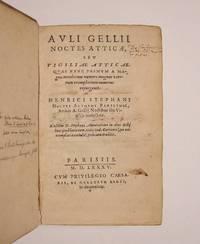
|
|
|
ARISTOTELES.
Aristotelis Politicorum libri octo ex Dion. Lambini & Pet. Victorii interpretationibus puriss. graecolatini Theod. Zvingeri Argumentis atque Scholiis Tabulis quinetiam in tres priores libros illustrati Victorii commentariis perpetuis declarati Pythagoreorum veterum Fragmenta politica a Io. Spondano conversa & emendata. Index rerum & verborum pleniss.
Basle Basileae Eusebii Episcopii opera ac impensa 1582. Folio. XX62312 index1 printer's mark p. Modern calf 35.5 cm Details: Nice copy bound in modern full redbrown calf with 5 raised bands on the back. Spine short title in gilt: 'ARISTOTELIS / DE REPVBLICA'. Text in three columns with the Greek in the centre flanked by the Latin translations of Piero Vettori and Denys Lambin respectively on each side. Large printer's woodcut device to the title and last page depicting a bust of 'Hermes triceps' three-headed Hermes on a pillar; each of the heads wears a winged helmet; the middle Hermes holds in his right hand a caduceus and in his left a bishop's staff Episcopius!; from the pillar seems to hang a chopped off head. Large historiated woodcut letter on leaf a2 woodcut letters of various sizes throughout the text. Wide margins Condition: First and last leaf dust-soiled. Small and faint name on the title. Paper yellowing. Small bookplate on the front pastedown. 2 bookplates on the lower pastedown Note: The Greek scholar/philosopher Aristotle 384-322 B.C. is one of the foremost names in the history of thought and perhaps the most influential of all who have ever written. His influence on Werstern science and culture is immense. His boundless industry extended to most branches of higher learning. 74 treatises genuine and spurious have come down to us under his name. His 'Politics' literally 'the things concerning the polis' is among his best known and most widely read works. It embraces in 8 books the historical theoretical and practical aspect of politics. To Aristotle 'politics were the very crown of philosophical study . and the ultimate end of the State to provide an environment in which those capable of the highest mental and moral development might attain thereto. . The important sections of this great work are the sketch of the ideal state . the account of the various forms of government . the discussions of sovranty and responsibility and of kingship'. H.J. Rose 'A handbook of Greek literature' Oxford 1965 p. 276 � This Basle edition of 1582 of the Politics adopts the Greek text Latin translation and the famous commentary earlier published by the Italian scholar Piero Vettori Petrus Victorius 1499-1585 at Florence in 1576. Vettori professor of Greek and Latin in the 'Studio Fiorentino' at Florence was the greatest Italian Greek scholar of his time. His best known works in the field of Greek philology are his commentaries on Aristotle's Rhetoric 1548 Poetics 1560 Politics 1576 and Nicomachean Ethics 1584. Every chapter caput in this Politics edition of 1582 is printed separately followed by Vettori's very extensive and rich commentary. The Greek text is flanked by 2 Latin translations one of Vettori and one which the French scholar and Royal Reader in Greek Denys Lambin Dionysius Lambinus 1520-1572 had published in Paris in 1567. Added to the chapters are hot from the press the notes and diagrams of the Basle professor of Greek and Moral philosophy Theodor Zwinger Theodorus Zuingerus 1533-1588. He is best known for his editions of the Nicomachean Ethics Basle 1566 and the Politica of Aristotle Basle 1582 in which he transformed these works in a series of diagrams analysing and showing their structures in systematic tables. Appended are the 'Pythagoreorum fragmenta politica' in the edition of the French scholar Jean de Sponde or Johannes Spondanus 1557-1595 Provenance: Bookplates of: 'United Presbyterian Church. 'Brown library'. Glasgow 66 Virginia St.' and of 'United Presbyterian College. Brown-Lindsay Library. Shelfmark 3C1.1 No. 5154'. � Small bookplate 'Bibliotheca Classica Stephaniana' of the Swedish classical scholar Staffan Fogelmark on the front pastedown. Fogelmark was Reader in Greek 1972-85 at Lund University; Lecturer in Greek 1985-96. University of Gothenburg: Professor of Greek 1997-2004 Ref: VD16 A 3582 & VD16 P 5468. Bibliotheca Bibliographica Aureliana 38 no. 108.655; Hoffmann 1294. Griechischer Geist aus Basler Pressen no 129. Ebert 1166; Graesse 1214. Adams A 1914. Moss 1129; Not in Brunet Collation: alpha6 beta4 a-z6 A-2G6 Photographs on request Heavy book may require extra shipping costs hardcover
书商的参考编号 : 79269

|
|
|
BORRICHIUS O.
Olai Borrichii Cogitationes De variis latinae linguae aetatibus & Scripto illustris Viri Ger. Joann. Vossii De vitiis sermonis; Accedit ejusdem Defensio nomine Vossii & Stradae adversus Gasp. Scioppium. Bound with: Olai Borrichii Analecta ad Cogitationes De lingua latina. Accedit appendix De lexicis latinis & graecis cum indice addendorum ad Fori Romani literam C.
Copenhagen Hafniae Sumptibus Petri Hauboldi Reg. Acad. Bibliop. 1675 & 1682. 4to. 2 volumes in 1: XVI3146 index; IV631 blank;68 p. Contemporary blindstamped vellum. 21 cm Ref: P.A. Hansen 'A bibliography of Danish contributions to Classical scholarship' no. 1350 1352 & 1413 Details: 6 thongs laced through both joints. Short title in ink on the back. Blind ruled borders with floral corner pieces. Title in red and black Condition: Vellum slightly soiled. Boards slightly curved. Paper of the first volume browned Note: The grammarian scientist and physician Ole Borch latinized as Olaus Borrichius 1626-1690 was one of the most important Danish philologists of the 17th century. This polymath was appointed professor of Philology Botany and Chemistry at the University of Copenhagen in 1666. He corresponded with the Dutch scholar Johann Gerhard Vossius and the German controversionalist Caspar Schoppius. In 1660 Borrichius published 'De lexicorum Latinorum jenunitate . dissertatio' which is a kind of supplement to Vossius' 'De vitiis sermonis'. In 1675 appeared Borrichius' 'Cogitationes de variis latinae linguae aetatibus' in which he corrects Scioppius' division in periods of latin literature golden silver bronze iron that the German scholar had suggested. The book contains also a defence of Vossius against Scioppius. Vossius' 'De vitiis sermonis' Amsterdam 1645 met with a condemnatory judgement of Scioppius. He wrote several letters to Vossius in which he offered to send him one of his works. The Amsterdam professor Vossius answered the letters but also asked his son Isaac who was on his Grand Tour in Italy to pay Scioppius a visit. Isaac fulfilled the request of his father and wrote back that he strongly had the impression that Scioppius suffered from some kind of mental illness. Then Vossius broke off the correspondence. Scioppius was a controversionalist by profession and in 1647 appeared at Venice and Ravenna his attack 'In viri clarissimi Gerardi Iohannis Vossii libro De vitiis sermonis animadversiones' in which Scioppius criticised Vossius for a number of inaccuracies in his 'Antibarbarus'. It was a comment that one could expect from the man who even criticised Cicero for the barbarisms in his work. The attack was reissued in Amsterdam in 1660 en 1666. In 1675 Borrichius published also a 'Dissertatio de causis diversitatis linguarum' on the origin of language and in 1679 a literary history 'Conspectus praestantiorum scriptorum Latinae linguae'. Between 1683 and 1687 he published a topography of ancient Rome 'De antiqua Urbis Romae facie' which work was incorporated in volume 4 of Graevius' Thesaurus antiquitatum Romanarum' 1694-1699 Collation: a-b4; A-2R4; pi2 A-Q4 R2 Photographs on request hardcover
书商的参考编号 : 130032
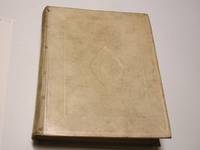
|
|
|
FLORUS.
L. Annaei Flori Epitome Rerum Romanarum. Cum integris Salmasii Freinshemii Graevii et selectis aliorum animadversionibus recensuit suasque adnotationes addidit Carolus Andreas Dukerus.
Leiden Lugduni Batavorum Apud Johannem vander Linden Juniorem 1722. 8vo. LXVI960120 index52 p. frontispiece; folding map of the Roman empire. One fullpage engraving in the text. Vellum 20 cm Ref: STCN ppn 226765512; Schweiger 2362/63; Dibdin 211; Moss 1447: 'does Duker great honour as a critic'; Fabricius/Ernesti 2447: 'omnium optima editio'; Brunet 21312; Graesse 2605; Ebert 7692: 'a new and excellent recension'; Spoelder p. 706 Weesp 5 Details: Prize copy but without the prize. Back gilt. Boards with gilt borders and with the gilt coat of arms of Weesp in the center. Frontispiece designed by H. van der My and etched by F. Bleiswyck depicting the goddess Roma throned on a pedestal; Herculus Ceres and Remus & Romulus are at the foot of the pedestal. Title in red and black. At the end 52 pages with the 'Liber Memorialis' by Ampelius 'Ex Bibliotheca Salmasii'. The full page engraving on page 237 shows the Columna Rostrata of Caius Duilius with the inscription on its base the explanation of the text follows on page 928-930 Condition: Vellum age-tanned the back is slightly warped. All 4 ties gone as is the prize. Paper yellowing some foxing Note: 'Favourite school-book in the 17th century'. This is the chief work of the Roman historian Lucius Annaeus Florus who lived at the beginning of the 2nd century AD. It is an abridgement in four books of Roman history with special reference to the wars waged up to the age of Augustus. It may be considered to be an epitome of Livy who he sometimes quotes verbatim. Florus also consulted works of Sallust and Caesar. The style is florid and poetic. Florus 'shows a certain literary gift marred howeverby a strong tendency to rhetoric. His brevity often entails obscurity though he sometimes produces a felicitous epigram. . As an historian he is often inaccurate in both chronology and geography but the work as a whole achieves a limited success as a rapid sketch of Roman military history. It was a favourite school-book in the 17th century'. OCD 2nd ed. p. 442 � This Florus edition is published by the Westphalian scholar and historian Karl Andreas Duker 1670-1752. At the age of 20 Duker came to the Netherlands to complete his studies in Franeker and Harderwijk. He was appointed professor of history and rhetoric at the University of Utrecht in 1716. He is best known for his Thucydides edition in two folio volumes 1731 and this Florus edition. It contains the complete notes of Salmasius Freinsheim and Graevius and the selected notes of others e.g. Gruter Lipsius the Vossii N. Heinsius and Perizonius and many of his own. Duker chose well Ernesti tells that the notes are 'in iudicio lectionis verborum rerum elegantes et exquisitae'. Ernesti recommends this edition for it enriches the 'ingenium' and sharpens the judgment of the 'studiosus'. In 1744 a second edition revised and augmented of this work was published Collation: -48 52 minus blank leaf 52; A-4B8 minus the blank leaves 4B7 & 4B8 Photographs on request hardcover
书商的参考编号 : 130091
|
|
|
PHILOSTRATUS.
TA T�N PHILOSTRAT�N LEIPOMENA HAPANTA. Philostratorum quae supersunt omnia. Vita Apollonii libris VIII; Vitae Sophistarum libris II Heroica Imagines priores atque posteriores et Epistolae. Accessere Apollonii Tyanensis epistolae Eusebii liber adversus Hieroclem Callistrati descript. statuarum omnia ex MSS. Codd. recensuit notis perpetuis illustravit versionem totam fere novam fecit Gottfridus Olearius.
Leipzig Lipsiae Apud Thomam Fritsch 1709. Colophon at the end: 'Typis Christophori Fleischeri an. MDCCIX' Folio. VIIIXLIII I;987 p. Vellum 37 cm Ref: Hoffman 377/78; Ebert 16744a; Brunet 4619; Graesse 5273; not yet in VD18 Details: Back with 6 raised bands. Boards with blindstamped borders. Blindstamped floral ornament in the center of the boards. Title in red and black. Woodcut printer's mark on the title: a pegasus flying among the clouds. Text in 2 columns Greek with parallel Latin translation. The commentary is printed on the lower part of the pages. Occasional text engravings Condition: Vellum age-toned spotted and scuffed. Front joint split but strong. Rear joint starting to split. Endpapers worn and waterstained. Small blind stamp near the lower edge of the title. Paper browning occasionally severe foxing Note: The Suda a 10th century Byzantine encyclopedia knows three Greek sophists called Philostratus three generations living between 160 and 250 A.D. The first one is thought to have written most works the 'Vita Apollonii' Life of Apollonius the 'Vitae Sophistarum' Biographies of Sophists the 'Gymnastikos' the 'Heroikos' the 'Eikones' and 'Dialexeis' and a collection of 73 letters mostly love letters. Neue Pauly 9 Philostratos 5-8 In the first years of the third century Philostratus moved to Rome where he entered the court of the emperor Septimius Severius. There he wrote ca. 307 A.D. at the behest of the empress Julia Domna Augusta whose favour he enjoyed a biography of the neopythagorean ascetic and wandering philosopher and also miracle-monger Apollonius of Tyana. Few books have over a long period of time aroused so much upheaval among Christians as this biography. Apollonius was born in the year when Jesus Christ is supposed to be born. It is almost impossible to reveal Apollonius' true identity or to decide whether this is a biography of a real or fictionalized hero or just an Heliodoran romance or a romantic hagiography or even a documentary romance. The question can be dealt from so many angles that the Philostratean studies constitute a separate branch in the research of the culture of the Early Roman Empire. The problem is 'that Philostratus as a man of letters and sophist full of passion for Greek romance and for the studies in rhetoric was hardly interested in the historical Apollonius'. DzielskaM. 'Apollonius of Tyana in legend and history' Rome 1986 p. 14 A fact is that contemporary sources reveal next to nothing about Apollonius. 'To satisfy the empress's demand who asked him Philostratus to narrate the life and achievements of Apollonius he had to invent this figure as it were anew. Thus using his literary imagination this moderately gifted writer turned a modest Cappadocian mystic into an impressive figure full of life politically outstanding and yet also preposterous'. Op. cit. p. 14 Nothing proves that the 'Vita Apollonii Tyanensis' was widely read in the 3rd century. It would probably not have survived were it not for the gouvernor of Bithynia Sossianus Hierocles one of the inspirators of the persecution of the Christians at the beginning of the third century in his province under the emperor Diocletian. At the beginning of the 4th century he published his 'Philaletes' a treatise against Christianity in which he ridiculed the divine attributes of Christ and praised Apollonius' virtues and thaumaturgic abilities. In the 'Philaletes' Hierocles propagated his pagan Christ Apollonius. The Christians were furiously enraged because Hierocles dared to contrast Apollonius with their Saviour. The Christians won under Constantine and the 'Philaletes' vanished soon from the face of earth. It is only known through the 'Against Hierocles' a treatise of the Churchfather Eusebius. The 'Vita Apollonii Tyanensis' in which it was believed that Apollonius was presented as the equal if not the superior of Christ survived however the burning of pagan literature by Christian mobs in early christianity. The 'Vitae Sophistarum' is a collection of biographies of 59 Greek sophists of the so-called Second or New Sophistic. Philostratus consulted their works but used also the oral tradition. This work is a valuable source for the history of philosophy from Nero to the beginning of the third century. The 'Gymnastikos' is a treatise on Greek athletics. In the 'Heroikos' the ghosts of Heroes especially Protesilaos tell remarkable particulars about themselves. The 'Imagines' the description of paintings of Philostratus and the 'Descriptio statuarum' the description of statues written by Callistratus belong to the rhetorical genre of 'ecphrasis' in which the relation of the verbal and visual was explored. Ancient Greek rhetoricians defined it as a 'speech that brings the thing shown vividly before the eyes' for instance the famous description of the Shield of Achilles by Homer in the 18th book of the Iliad vs. 478/608. 'In modern criticism ecphrasis has come to be defined as the 'description of a work of art a category that may be restricted to the visual arts painting and sculpture or expanded to include architecture and other arts'. The Classical Tradition Cambr. Mass. 2010 p. 291 s.v. Ecphrasis � The German theologian and classical scholar Gottfried Olearius 1672 - 1715 was appointed professor of Greek and Latin at the University of Leipzig in 1699. In 1693 he started a journey which brought him to Oxford and Cambridge where he stayed for more than a year to study Greek manuscripts. ADB 24 277/78; he has also a lemma in Wikipedia Provenance: At the lower edge of the title a blind imprint of a small oval stamp in the center of which an imperial eagle. The legend reads: 'empire francais zuiderz�e decret du . vrier 181'. Napoleon annexed in 1810 the Netherlands into the French empire. The provinces North Holland and Utrecht were transformed into the 'D�partement Zuiderz�e'. The legend probably refers to the 'decret du 5 f�vrier 1810' decree of the 5th february 1810 in which Napoleon regulated the booktrade. On the front pastedown has been pasted a small paper label reading: 'Henry Bousquet' Collation: pi4 a-e4 f2 leaf f2 verso blank; A-6H4 6I2 leaf 6I2 verso blank Photographs on request Heavy book may require extra shipping costs hardcover
书商的参考编号 : 17293
|
|
|
LIBANIUS.
Libaniou Sophistou Epistolai. Libanii Sophistae epistolae. Quas nunc primum maximam partem e variis codicibus manu exaratis edidit latine convertit & notis illustravit Joannes Christophorus Wolfius. Accedunt in calce ejusdem Libanii epistolae a Francisco Zambicario olim Latine conversae & Cracoviae primum editae heic autem integra propemodum centuria ex MS auctae.
Amsterdam Amstelaedami Apud Janssonio-Waesbergios 1738. Folio: XX8651 blank p. Vellum 42x27 cm 'The first comprehensive edition of the letters of Libanius accompanied by a Latin translation' Ref: STCN ppn 183220943; Brunet 31050; Hoffmann 2522; Graesse 4195; Ebert 11937 Details: Back with 7 raised band. Boards blind tooled. Broad margins. Title in red and black. Engraved printer's mark on the title depicting a mole flanked by a seating Hermes and Athena; the motto is: 'vulgo caeca vocor video sed acutius ipso' 'By the crowd I am called blind; but I see better than itself'. Printed in 2 columns Greek text with parallel Latin translation. Notes at the bottom of the page. A good copy inside fine Condition: Binding soiled and scuffed. Front hinge splitting but still tight. Small tear in the vellum on the back. Both pastedowns worn. Turn-in of the lower board loosening. Paper yellowing Note: The German christian Hebraist and classical scholar Johannes Christoph Wolf 1683-1739 is best known for his path-breaking 'Bibliotheca Hebraea' Hamburg 1715-1733 which remained long the most cited source for bibliographic information on Hebrew books and the background of their authors and which bore witness to christian interest in Jewish literature and realia. Wolf especially occupied himself with the study of Oriental languages and literature of which he became professor at the Hamburg gymnasium in 1712. There he compiled the 'Bibliotheca Hebraea'. Among classicists Wolf is known for the edition of his 'Anecdota Graeca sacra et profana' Hamburg 1722-1724 and this edition of 1738 of the letters of the Greek rhetorician and philosopher Libanius ca. 314-392/93 A.D. who was one of the most influential authors of late antiquity. It is the first comprehensive edition of the letters of Libanius accompanied by a Latin translation. � Libanius 'embodied in his work many of the ideals and aspirations of the pagan Greek urban upper classes of late antiquity'. OCD 2nd ed. p. 605 In 354 he was appointed to the official chair of rhetoric at Antioch. His pupils include pagans and christians e.g. Johannes Chrysostomos Basilius Magnus Gregorius Nazianzenus. As a literary figure of renown he corresponded with many leading figures in the Greek world among whom the Emperor and philosopher/scholar Julian Julianus Apostata who was much admired by him. In this edition of Wolf 1605 letters have been collected p. 1/728. At the end of these genuine letters Wolf added a reissue of a collection of 476 letters in Latin translation of Libanius which was first published in the Polish city Cracow in 1504 by one Johann Sommerfeldt who had got a mutilated manuscript depravatissimum exemplar with these translated letters from a local 'bibliopola'. p. 729 Well into the 19th century these Cracovian Latin letters were considered authentic works of Libanius. Now we know that they are forgeries by the Italian humanist Francesco Zambeccari ca. 1443 - after 1475 Hoffmann 2528. Zambeccari was unmasked in 1878 by R. Foerster in his 'Francesco Zambeccari und die Briefe des Libanios'. Stuttgart 1878 Collation: pi2 �2 -32 A-5L4 5M-5Y2 last leaf 5Y2 blank Photographs on request hardcover
书商的参考编号 : 16567
|
|
|
LHOMOND ChF. h. F.
�l�mens de la grammaire latine � l'usage des coll�ges. Par Lhomond professeur �m�rite en la ci-devant Universit� de Paris. 16e �dition.
Paris De l'Imprimerie de J.-P. Jacob � la librairie �conomique rue de la Harpe ancien Coll�ge d'Harcourt no. 94 1807. 12mo. 2164 p. Vellum over boards. 17 cm Details: The binder has covered the boards of this book with two strips of vellum of an old contract or charter. The handwriting on it is cursive and illegible for a layman but 6 signatures are clearly visible 2 first names are legible of one 'Charles' and 'Jacques' Condition: After the titlepage and before the beginning of the first chapter 4 pages are missing. Probably a praefatio or perhaps the 4 pages which have been bound at the end of the book. These 4 pages contain a stocklist of the titles available at the 'Librarie �conomique'. Vellum soiled. Well read. On some pages marginal numbers in pencil. Paper yellowing Note: Numerous editions of this Latin grammar were published in France during the 19th century. The 'abb�' Charles-Fran�ois Lhomond 1727-1794 was 20 years 'r�gent de sixi�me' at the College of Cardinal Lemoine. After his retirement he dedicated himself to the writing of schoolbooks. His '�l�mens de la grammaire latine' was first published in 1780. Since 1789 he is one of the most reprinted and revised school authors in France. There are 166 plus one more at least editions of his Latin works. A. Chopin 'Les manuels scolaires en France de 1789 � nos jours 3: Les manuels de latin' Paris 1988 We found no copy of this 1807 edition in Chopin nor did we find one in KVK Karlsruher Virtueller Katalog. So this schoolbook must be rare Photographs on request hardcover
书商的参考编号 : 120102
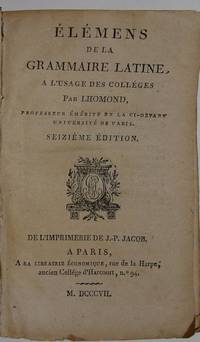
|
|
|
HEMSTERHUIS T. RUHNKEN D.
Elogium Tiberii Hemsterhusii auctore Davide Ruhnkenio.
Leiden Lugduni Batavorum Apud Sam. et Joh. Luchtmans Academiae Typographos 1768. 8vo. 604 blank p. Contemporary paper wrappers 22 cm Ref: STCN ppn 240927982 Details: First edition. Margins uncut Condition: Cover worn. Right edge thumbed and slightly chipping. Paper yellowing Note: The honour of reviving the study of Greek in the Netherlands belongs to the Dutch classical scholar Tiberius Hemsterhuis 1685-1766 who was appointed professor Mathematics and Philosophy at the Athenaeum of Amsterdam at the age of 19. His great example was the English classical scholar Richard Bentley 1662-1742 Master of Trinity College Cambridge with whom he corresponded early in his career. In 1705 Hemsterhuis was promoted to a professorship in Harderwijk and in 1717 he was appointed professor of Greek at the University of Franeker. In 1740 he was finally called to Leiden. He produced an edition of Pollux 1706 'Luciani colloquia et Timon' 1708 the complete works of Lucianus 1743 and of the Plutus of Aristophanes 1744 a work which Gudeman calls 'epochemachend'. He contributed also notes to the editions of many other scholars. Sandys observes that 'the work of a Hemsterhuis was worth whole bundles of the mechanically manufactured products of a Burman'. Sandys 2451 Hemsterhuis was the founder of a Dutch school of criticism the so-called 'Schola Hemsterhusiana' which had disciples in Valckenaer Jacob van Lennep and David Ruhnken. The last one was the most famous of his pupils. 'Hemsterhuis has had the supreme felicity of being immortalised by a 'laudator eloquentissimus'. The 'Elogium' delivered in 1768 by his devoted pupil Ruhnken on resigning the office of Rector is one of the Classics in the History of Scholarship. It presents us with the living picture of the perfect critic'. Idem ibidem � The Dutch scholar of German origin David Ruhnken or Ruhnkenius 1723-1798 was born in Pommern and was sent by his parents in 1737 to the Friedrichscollegium in K�nigsberg where he read Latin authors together with his friend Immanuel Kant. To finish his studies he went in 1744 to Leiden to study Greek under Tiberius Hemsterhuis whom he admired. He later told his biographer Wyttenbach that he found in his teacher the combined gems of Leiden classical scholarship Scaliger and Salmasius in one person. Hemsterhuis wanted to create a worthy successor and appointed him in 1757 to assist him as Reader in Greek. In 1761 Ruhnken succeeded the Latin chair vacated by Oudendorp. He became one of the leading scholars of his days. 'Die F�hrerstellung der Philologie erbte . von Hemsterhuys der Pommer David Ruhnken der ganz zum Holl�nder ward und die vornehme und beh�bige W�rde eines 'Princeps criticorum' zu wahren wusste. Als solchem hat ihm Fr.A. Wolf die Prolegomena gewidmet. . Musterhaftes Latein galt ihm soviel wie Wissenschaft. Aber als Lehrer muss er gl�nzend gewesen sein. . Alles was Ruhnken ver�ffentlicht hat ist in seinen Grenzen tadellos'. U. von Wilamowitz-Moellendorff Geschichte der Philologie Lpz./Bln. 1921 p. 39/40 Collation: A-D8 leaf D7 & D8 blank Photographs on request unknown
书商的参考编号 : 130073
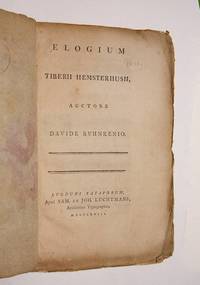
|
|
|
HEMSTERHUIS T. & D. RUHNKEN. LINDEMANN F.
Vitae duumvirorum Tiberii Hemsterhusii et Davidis Ruhnkenii. Altera ab eodem Ruhnkenio altera a Dan. Wyttenbachio scripta. Olim in Germania iunctim repetitae nunc iterum editae. Accessit Elogium Ioannis Meermanni auctore Constantino Cras. Curavit Fridericus Lindemann.
Leipzig Lipsiae In Libraria Hinrichsiana 1822. 8vo. 284 p. Contemporary dull stiff wrappers 22 cm Ref: Graesse 6/1191; Ebert 19587; Brunet 41457 Details: Margins uncut Condition: Spine covered with a strip of brown paper. Boards worn. Paper yellowing and foxed Note: The honour of reviving the study of Greek in the Netherlands belongs to the Dutch classical scholar Tiberius Hemsterhuis 1685-1766 who became professor Mathematics and Philosophy at the Athenaeum of Amsterdam at the age of 19. His great example was the English classical scholar Richard Bentley 1662-1742 with whom he corresponded early in his career. In 1705 Hemsterhuis was promoted to a professorship in Harderwijk and in 1717 he was appointed professor of Greek at the University of Franeker. In 1740 he was finally called to Leiden. He produced an edition of Pollux 1706 'Luciani colloquia et Timon' 1708 the complete works of Lucianus 1743 and of the Plutus of Aristophanes 1744 a work which Gudeman calls 'epochemachend'. He contributed also notes to the editions of many other scholars. Sandys observes that 'the work of a Hemsterhuis was worth whole bundles of the mechanically manufactured products of a Burman'. Sandys 2451 Hemsterhuis was the founder of a Dutch school of criticism the so-called 'Schola Hemsterhusiana' which had disciples in Valckenaer Jacob van Lennep and David Ruhnken. The last one was the most famous of his pupils. 'Hemsterhuis has had the supreme felicity of being immortalised by a 'laudator eloquentissimus'. The 'Elogium' delivered in 1768 by his devoted pupil Ruhnken on resigning the office of Rector is one of the Classics in the History of Scholarship. It presents us with the living picture of the perfect critic'. Idem ibidem � The Dutch scholar of German origin David Ruhnken or Ruhnkenius 1723-1798 was born in Pommern and was sent by his parents in 1737 to the Friedrichscollegium in K�nigsberg where he read Latin authors together with his friend Immanuel Kant. To finish his studies he went in 1744 to Leiden to study Greek under Tiberius Hemsterhuis whom he admired. He later told his biographer Wyttenbach that he found in his teacher the combined gems of Leiden classical scholarship Scaliger and Salmasius in one person. Hemsterhuis wanted to create a worthy successor and appointed him to assist him as Reader in Greek. In 1761 Ruhnken succeeded the Latin chair vacated by Oudendorp. He became one of the leading scholars of his days. 'Die F�hrerstellung der Philologie erbte . von Hemsterhuys der Pommer David Ruhnken der ganz zum Holl�nder ward und die vornehme und beh�bige W�rde eines Princeps criticorum zu wahren wusste. Als solchem hat ihm Fr.A. Wolf die Prolegomena gewidmet. . Musterhaftes Latein galt ihm soviel wie Wissenschaft. Aber als Lehrer muss er gl�nzend gewesen sein. . Alles was Ruhnken ver�ffentlicht hat ist in seinen Grenzen tadellos'. U. von Wilamowitz-Moellendorff Geschichte der Philologie Lpz./Bln. 1921 p. 39/40 � Ruhnken was immortalized by Daniel Wyttenbach 1746-1820 born at Bern in Switzerland who came to Holland in 1770 to stay there like Ruhnken before him. 'In the next 28 years he held professorships at Amsterdam 1771-99 and then returned to Leyden as Ruhnken's successor for 17 years 1799-1816'. Sandys 2463 He published an edition of the complete Moralia of Plutarchus with Latin translation 1795-1806 a work of permanent value. On the death of Runken he became the most influential classical scholar in the Netherlands. 'The highest praise must be assigned to his 'Life of Ruhnken' a work of absorbing interest to his scholarly contemporaries which still retains its importance as a comprehensive picture of the Scholarship of the Netherlands and not of the Netherlands alone in the age of Ruhnken'. Idem 2/465 � The third biography in this convolute concerns the Dutch politician author and bibliophile Johannes Meerman 1753-1815. The eulogy was first published in Amsterdam/The Hague in 1817. Lindemann was aware that Meerman was not a classical scholar and that he in no way equalled Hemsterhuis and Ruhnken in scholarship and style yet he added the Life because he derived much pleasure from reading it he tells in the preface and hoped that it would stimulate young students 'iuvenes ad meliora eninentes et litterarum studia penitus amplecti cupientes'. Praefatio editionis secundae p. X Meerman who received private tuition from Ruhnken p. 232 is best known as a bibliophile. The Museum Meermanno House of the Book Huis van het boek in The Hague formerly called Museum Meermanno-Westreenianum was named after him and holds part of his huge collection of rare books and manuscripts. The museum focuses on the written and printed book in all forms Collation: pi6 minus blank leaf pi6 A-R8 S6 signature of gathering S irregular Photographs on request hardcover
书商的参考编号 : 130076
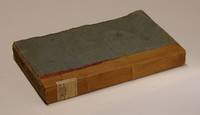
|
|
|
LUCANUS & PETRONIUS.
Marci Annaei Lucani Pharsalia eiusdem ad Calpurnium Pisonem poemation. Praemittitur notitia literaria studiis Societatis Bipontinae. Editio secunda auctior et emendatior. Bound with: T. Petronii Arbitri Equitis Romani Satiricon cum supplementis Nodotianis. Accedunt veterum poetarum catalecta. Praemittitur notitia literaria studiis Societatis Bipontiae. Editio accurata.
Ad 1: Zweibr�cken Biponti Ex typographia Societatis 1807. Ad 2: Zweibr�cken Biponti Ex typographia Societatis 1790. 8vo. 2 volumes in 1: XLVIII2771 blank; XXXVI252 p. Half calf 21 cm Ref: Ad 1: Burkard p. 91/93; Schweiger 2566; Dibdin 2188: 'elegantly executed book'; Moss 2243: 'a very neat and correct edition'; Ebert 12355; Graesse 4274; Ad 2: VD18 11361557; Burkard 125/27; Schweiger 2725; Dibdin 2278: 'neat edition and useful for presenting us with a valuable Notitia literaria'; Ebert 16527; Graesse 5240 Details: Back ruled gilt and with a red morocco shield. Ad 1: The preliminary pages contain a 2 short biographies of Lucanus p. I-IX and a 'notitia literaria including a long and up to date critical bibliography of editions and translations the 'index editionum' p. X-XLVIII; the Pharsalia take up p. 1-265 followed by the 1st century A.D. Latin verse panegyric in praise of a member of the Piso family 'Laus Pisonis' p. 267-277. This panegyric has been attributed to Lucan but also to Ovid Bassus and Statius. Ad 2: The preliminaries contain a 'Live' of Petronius p. III-VIII followed by a 'Notitia Literaria' or a critical bibliography of important editions p. X-XXXVI. The Satiricon fills the p. 1-214 the 'Petronii fragmenta' p. 215-225. At the end a collection of fragments of ancient Latin poets the 'Veterum poetarum catalecta' p. 227/52. An engraved vignette adorns the title depicting a man and woman on a 'chaise longue' and a girl and boy standing beside them Condition: Binding slightly scuffedPhotographs on request unknown
书商的参考编号 : 153306
|
|
|
DECLARATIO ORDINUM HOLLANDIAE WEST FRISIAEQUE
Declaratio Ordinum Hollandiae West-Frisiaeque ex ipsis fundamentis Regiminis Belgici desumpta qua jus & potestas singularum Provinciarum cum externis Princibus contrahendi & de quibuscunq: negotiis constituendi proponitur nisi quid foedere unionis An. 1579 Ultrajecti composito aut speciatim Foederatorum Procerum conventui delatum fuerit. Qua legitima & justa esse ostenditur concessio instrumenti seclusionis Principis Auriaci sicut a Nobil. & Potentibus Ordin. Hollandiae West-Frisiaeque anno 1654 IV Maii decretum fuit; . Versum Exemplar ex Belgico quod impressum est Hagae-comitis a Typographo Nob. & Potent. Ord. Hollandiae West-Frisiaeque cum privilegio.
Leiden Amsterdam Lugduni Batavorum Amstelrodami Apud Joannem Maire et . apud Ludovicum Elzevirium 1654. 4to. 196 recte 192 p. 18th century boards. 19 cm Ref: Willems 1172; Berghman 302; Not in Rahir; Breugelmans p. 688 1654:3 Details: Printer's device on the title: a shoveling farmer above his head the motto 'fac & spera' Condition: Cover scuffed especially on the joints. 2 small library stamps on the title Note: In May 1654 the Dutch Prime Minister Raadspensionaris of the Republic of the United Provinces of the Netherlands Johan de Witt 1625-1672 brought about peace with England after the First Anglo-Dutch War a naval conflict over trade which had begun in 1652. The peace treaty called the Treaty of Westminster had a secret annex the Act of Seclusion in which the Republic promised to appoint never again as stadholder offspring of the prince of Orange stadholder William II who had died in 1650 the offspring being the not yet four year old infant William III born after the death of his father. His mother was Maria Henri�tte Stuart the oldest daughter of the English King Charles I. This annex had been attached on the instigation of the dictator Lord Protector Oliver Cromwell who felt that since William III was a grandson of the executed Charles I it was not in the interests of his own republican regime to see William or a Stuart ever gain political power. The republican Johan de Witt kept the annex secret from fear that some of the provinces where the House of Orange had much influence wouldnot sign the peace treaty. Soon the annex got leaked out and De Witt was blamed for excluding the House of Orange from power. With a speech called the 'deductie ofte declaratie van de Staten van Hollandt ende West-Vrieslandt' De Witt succeeded in convincing the other provinces. The speech brought about much political turmoil. The speech 'Deductie ofte declaratie van de Staten van Hollandt ende West-Vrieslandt : behelsende een waerachtich ende grondich bericht van de fondamenten der regieringe vande vrye Vereenichde Nederlanden . ingestelt ende dienende tot justificatie van 't verleenen van seeckere Acte van Seclusie raeckende 't employ vanden Heere Prince van Oraigne . op den vierden Mey 1654 ghepasseert' was published in The Hague the same year 1654. Later that year the speech was translated into Latin and published by Maire and Elsevier. � William III got his revenge in the Disaster Year Rampjaar 1672 when the Dutch republic was attacked from all sides simultaneously by England France and the prince-bishops of M�nster and Cologne who quickly defeated the Dutch States Army and conquered part of the Republic. Orangists then took power by force and deposed de Witt who recovering from an earlier Orangist attempt on his life in June was lynched by an organized Orangist mob. William greatly rewarded the assassins of his greatest political opponent. In 1688 William III invaded England deposed King James and became together with his wife Mary the daughter of his maternal uncle James Duke of York joint sovereigns of England Ireland and Scotland Provenance: Small stamp of the Dutch 'Koninklijke Bibliotheek' Royal Library and a smaller withdrawal stamp on the title Collation: A-E4 F2 G-2A4 2B2Photographs on request hardcover
书商的参考编号 : 130049
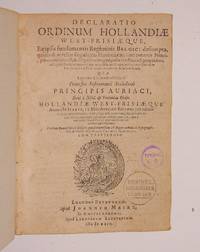
|
|
|
HESIODUS.
H�SIODOU ASKRAIOU ta heuriskomena. Hesiodi Ascraei quae extant. Daniel Heinsius interpretationem infinitis locis emendavit. Introductionem in Opera & Dies in qua Hesiodi philosophia nunc primum exponitur item notas addidit.
Leiden Lugduni Batavorum Ex Officina Ioannis Patij Iurati & Ordinarii Academiae Typographi Prostant in Bibliopolio Commeliniano 1613. 8vo. 2 parts in 1. XXXVIII2 blank1-2042 second title205-31233 blank p. Vellum 18.5 cm Ref: STCN ppn 059312521; Hoffmann 2249; Graesse 3263; Ebert 9599 Details: 6 thongs laced through both joints. First title in red and black. Woodcut printer's mark on the title it depicts Pallas Athena standing in an archway at her feet the coat of arms of Leiden. Greek text with opposing Latin translation. The second part contains Heinsius' 'Introductio' and his 'notae emendationes & observationes in Hesiodum' Condition: Vellum soiled and scratched. Small wormhole in lower margin not affecting the text. Paper yellowing Note: Hesiodus from Askra a small town in Boiotia born ca. 775 BC is one of Greek's oldest poets. His poems are in Homeric hexameters and show his interest in ethics and systematization. His work was known throughout antiquity to rhapsodes scholars and schoolboys. The Byzantines compiled scholia from ancient commentaries for elucidation. The Renaissance did not quite appreciate him. Until 1667 ca. 18 editions of his 'opera omnia' were published not much. Hesiod's reception chiefly concerns myths and the motifs that he provides and these motifs certainly appealed to mythographers historians of religion poets and painters. 'Hesiodic details of myth saturate European epic and mythopoeic writings perhaps most spectacular in Dante Milton Blake . who make much of Hesiod's infernal regions his Titans and primordial monsters his giant battles'. The Classical Tradition N.Y 2010 p. 435 Of Hesiod survives his 'Theogonia' or 'Theogony' which 'deals with the origin and genealogy of the gods . and the events that led to the kingship of Zeus: the castration of Uranos by Kronos and the overthrow of Kronos and the Titans by the Olympians' OCD 2nd ed. p. 510 The 'Works and Days' or 'Erga kai H�merai' of Hesiod which was always most read has been called a 'gospel of labour'. The poet recommends the hard and honest life of a farmer. He 'inveighs against dishonesty and idleness by turns using myth . parable allegory and threads of divine anger. . The poem as a whole is a unique source for social conditions in early archaic Greece.' OCD 2nd ed. p. 511 The third poem that has survived is the 'Shield' or 'Aspis' a short narrative poem on Heracles' fight with Cycnus a bloodthirsty son of the god Ares. It derives its name from the long description of Heracles' shield. 'Artists have never abandoned a fascination with Hesiod on the Muses. In the 19th century the artist Gustave Moreau created many visual representations of their initiation of the poet. Both Rubens and Goya painted famous and harrowing pictures of Kronos Saturn devouring one of his children a motif from the Theogony; William Blake engraved a series after drawings by his friend John Flaxman . Georges Braque chose the 'Theogony' as the subject of 20 etchings'. The Classical Tradition N.Y. 2010 p. 436 � This edition of Hesiod is a kind of 'editio minor' of the 'editio maior' that was produced by the Dutch classical scholar of Flemish origin Daniel Heinsius 1580-1655 and which was published ten years earlier in 1603. For this edition in a smaller form he left out the Byzantine scholia sine veterum interpretatione and made some corrections in the text and the translation. 'The text is not formed altogether on the preceding editions: where it differs from them the reason of such difference is given in the notes'. Dibdin 233 � Heinsius who enjoyed an international reputation as an editor of classical texts theorist of literary criticism historian and neolatin poet was professor of Poetics at the University of Leiden from 1603 extraordinarius Greek since 1605. After the death of J.J. Scaliger to whose inner circle he belonged he held the chair of Greek from 1609 till 1647. His activities have been obscured to later generations by the very bulk and variety of his activities. He is still remembered for his neolatin poetry and for his edition of Aristotle's treatise on poetry 1610 which he studied in connection with the Ars Poetica of Horace. In his pamphlet De tragoediae Constitutione published in 1611 he deals with all the essential points in Aristotle's treatise giving proof that he has thoroughly imbibed the author's spirit'. J.E. Sandys 'A history of classical scholarship N.Y. 1964 vol. 2 p. 314 Provenance: On the front pastedown in pencil: '25 maart 1958' written by the Flemish linguist Walter Couvreur 1914-1996 who was an Orientalist and professor of Indoeuropean linguistics at the University of Gent. It indicates the date of aquisition. The place of acquisition he wrote on the flyleaf at the end: 'Leipzig Deutsche Buch Export und Import' Collation: : - 2:8 3:4 leaf 3: blank; A-V8 leaf V8 blank Photographs on request hardcover
书商的参考编号 : 130078
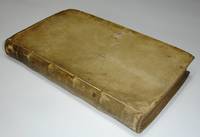
|
|
|
ELMACINUS GEORGIUS.
Historia Saracenica qua res gestae Muslimorum inde a Muhammede Arabe usque ad initium Imperii Atabacaei per XLIX imperatorum successionem fidelissime explicantur. Insertis etiam passim Christianorum rebus in Orientis ecclesiis eodem tempore potissimum gestis. Arabice olim exarata a Georgio Elmacino fil. Abuljaseri Elamidi f. Abulmacaremi f. Abultibi. Et latine reddita opera & studio Thomae Erpinii. Accedit & Roderici Ximenez Archiepiscopi Toletani Historia Arabum longe accuratius quam ante e manuscripto codice expressa.
Leiden Lugduni Batavorum Ex Typographia Erpeniana linguarum orientalium Prostant apud Iohannem Maire & Elzevirios 1625. Small 4to. VI372 recte 364;75 p. Vellum 20 cm Ref: Willems 232; Rahir 196; 1916; a very complete description in R. Breugelmans 'Fac et Spera' 1625/3 p. 215; STCN ppn 114250871; Graesse 2469; Ebert 6671; Brunet 2964/65 Details: Latin translation only. The printer's mark of Elzevier 'Non solus' on the title Condition: Vellum spotted scratched and slightly worn at the extremes. Boards a bit curved. Small piece at the foot of the spine is worn away. Endpapers dustsoiled. Old owner's inscription on the title. Faint waterstains in the lower margin of a few gatherings. Slight foxing Note: At the beginning of the 17th century The Netherlands were a world power. Political cultural and commercial interests were combined. The wealth and power of this small republic were stimulated by the fall of the merchant city of Antwerp the economic and financial centre of North-Western Europe in 1585 and by the arrival especially in Amsterdam of numerous Flemish refugees. Among the refugees were also many Sefardic Jews many of them merchants. These Jews had fled from Spain after the forming of the Iberian Union of the Kingdom of Spain and Portugal in 1580 and especially after the Reconquista in 1492. The ties between Sefardic Jews in the Netherlands and Sefardic Jews in Venice and Istanbul made it possible for the young Republic to replace the Venetian seapower and become the dominant factor in Mediterranean commerce. In 1610 the Dutch republic entered into a treaty with Morocco and in 1612 with the Porte of Turkey. This caused interest in the world of the Islam and the need to study Arabic on a scientific basis. In 1609 already the young Thomas Erpenius 1584-1624 met in Paris Casaubon who urged him to study Arabic. In Leyden he was a student of Scaliger one of the greatest classical scholars ever but also a formidable orientalist. In 1613 Erpenius was appointed professor of Arabic and 'andere orientaelse spraecken' in the university of Leyden. On his own expense he established a printing press with Arabic and oriental printing types. In 1615 he published the fables of the Arab poet Lokman. He also produced several grammars of oriental languages. After his premature death caused by the plague his widow published some works until the publisher Isaac Elzevier bought the typographical material: 'Isaac Elzevier acheta en 1625 le mat�riel laiss� par le d�funt et probablement aussi les ouvrages en cours d'impression tels que l'Historia Saracenica'. Rahir see also the preface to 'De fabels van Lokman naar het Latijn van Thomas Erpenius' The Hague 1964. � Elmacin 1205-1273 also known as Ibn Amid was an Arabic Christian historian. He wrote a cronicle of the Saracens which extends from the time of Mohammed to the accession of the Mameluke Sultan Baybars in 1260. His main source is the Persian historian Al-Tabari as the author tells us. Elmacin in his turn was the source for later Moslem and Christian historians. In 1625 Erpenius' widow published the Arab text of the cronicle. Our copy contains the Latin translation by Erpenius of the history of the Saracens that was published by the Leyden firms of Elsevier and Maire also in 1625. It was one of the first translations ever made of an Arabic text in modern times. In the same year an edition in folio was published which offers an Arabic text with the opposing translation into Latin. Breugelmans 1625/2. The last 75 pages contain the Arab history written by the archbishop of Toledo Rodrigo Jim�nez de Rada 1170-1247 Provenance: On the title in ink an old and hard to decypher ownership entry: 'Alberti Stanislai B'. � An old inscription about Elmacin on verso of front flyleaf: 'Elmacin sollte eigentl Elmekjin und ohne Artikel Mekjin geschrieben und ausgesprochen werd. Elmacin war Christ in Arabien im 13. Jahrhund.' Collation: 4 A-2Y4 2Z2; A-I4 K2 leaf K2 verso blank The pagination in gathering Q is irregular 8 page numbers are skipped the pagination jumps from 127 to 136; else nothing irregular the text and the catchword are correct Photographs on request hardcover
书商的参考编号 : 130054
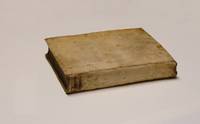
|
|
|
GRAEVIUS JG. J. G.
Johannis Georgii Graevii orationes quas Ultrajecti habuit.
Leiden Lugduni Batavorum Apud Johannem du Vivie 1717. XXVIII6071 errata p. Vellum 19.5 cm Ref: STCN ppn 226765288 Details: 6 thongs laced through both joints. Title in red and black and with a woodcut printer's mark depicting a sun-baked landscape in the sky the motto: 'Ab Uno Vita'. Contains 18 speeches including at the end Petrus Burmannus' funeral speech for Graevius held on February 18th 1703 Condition: Vellum slightly soiled some wear to the extremes. Stamp on the verso of the title Note: Johann Georg Graeve or in Latin Johannes Georgius Graevius 1632-1703 was born in Germany and educated at Schulpforta. He was professor of Eloquence at Duisburg from 1657 at Deventer and from 1661 at Utrecht 'where he lived and worked for the last 40 years of his life'. He limited his attention mainly to writers of Latin prose Cicero Suetonius Caesar Justinus Florus. This scholar of international stature is remembered for his 'Inscriptiones antiquae' long time the standard edition; he is also famous for his three 'Thesauri' in which important works of previous leading scholars were collected and reprinted the 'Thesaurus eruditionis scholasticae' 1710 the 12 folio volumes of the 'Thesaurus antiquitatum Romanarum' 1694-99 and the 9 volumes 'Thesaurus antiquitatum et historiarum Italiae' 1704. The latin style of his prefaces his speeches and his letters is said to be elegant. Graevius was an inspiring Latin orator. His lecture room was crowded with his pupils. His speeches were collected and published by one of those pupils Petrus Burmannus the Elder 1668-1741. The collection contains 17 speeches of Graevius and opens with his inaugural speech of 1661. There is also the speech he delivered on the occasion of the 50th anniversary of the University. Furthermore there are four speeches for William III one for the stadholder of Holland Willem III on the occasion of his expedition to England 1689 an eulogy of William III King of Great Britain1691 a funeral speech for Queen Mary II of England the wife of William III 1695 and a funeral speech for William 1702. Graevius was made 'Historiographer Royal' to William III Remarkable is Graevius speech of 1665 'De Cometis contra vulgi opinionem Cometas esse malorum nuntios' in which he contended to the chagrin of orthodox protestants that comets did not herald disaster for the earth. People should not fear comets because these firy celestial objects belonged to the works of God which obeyed the law of nature. To eradicate this cometary superstition he devoted part of his speech to a critical analysis of historical accounts. Graevius was skeptical about the biblical foundation of the belief that comets were signs of God's displeasure. 'Graevius oration overtly questioned the 'post hoc ergo propter hoc' argument as well as the argument from universal consent. Moreover his diatribe was a manifestation of a much broader tendency to put the ancient writers in their own proper context'. E. Jorink "Comets in Context. Some thoughts on Bayle's Pens�es diverses' in 'Pierre Bayle 1647-1706 le philosophe de Rotterdam' Leiden/Boston 2008. p. 64 The great comet or 'blazing star' of 1664 coincided with an outbreak of the plague which took the lives of more than 24000 people in Amsterdam only Provenance: On the verso of the title a stamp 'E Bibliotheca Lycei Wernigerodani'. Wernigerode is a German city in Sachsen-Anhalt Collation: 8 6 A-2P8 Photographs on request hardcover
书商的参考编号 : 130071
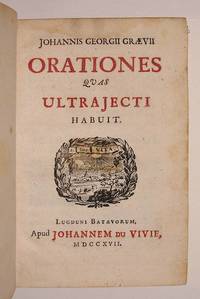
|
|
|
HEMSTERHUIS T. BERGMAN JTh. J. Th
Elogium Tiberii Hemsterhusii auctore Davide Ruhnkenio. Accedunt duae Richardi Bentleji epistolae ad Hemsterhusium. Vita Davidis Ruhnkenii auctore Daniele Wyttenbachio. Cum praefatione et annotatione edidit Joannes Theodorus Bergman.
Leiden Lugduni Batavorum Apud S. & J. Luchtmans Amsterdam Amstelodami Apud P. den Hengst et Filium 1824. 8vo. VIIIXLIVIV;532 p. Vellum 22 cm Ref: Ebert 24055: 'Beste Ausgabe dieser beiden Meisterwerke'; Graesse 6/1191 & 6/2481; Spoelder p. 545 Dordrecht 2 Details: Prize copy but without the prize. Back and boards gilt gilt coat of arms of Dordrecht in the centre of both boards. The last 230 pages contain the notes of Bergman Condition: Prize gone. Vellum age-toned back soiled red label in the 'second compartment' gone. Upper board slightly curved. Several marginal pencil annotations and some foxing Note: The honour of reviving the study of Greek in the Netherlands belongs to the Dutch classical scholar Tiberius Hemsterhuis 1685-1766 who became professor Mathematics and Philosophy at the Athenaeum of Amsterdam at the age of 19. His great example was the English classical scholar Richard Bentley 1662-1742 Master of Trinity College Cambridge with whom he corresponded early in his career. In 1705 Hemsterhuis was promoted to a professorship in Harderwijk and in 1717 he was appointed professor of Greek at the University of Franeker. In 1740 he was finally called to Leiden. He produced an edition of Pollux 1706 'Luciani colloquia et Timon' 1708 the complete works of Lucianus 1743 and of the Plutus of Aristophanes 1744 a work which Gudeman calls 'epochemachend'. He contributed also notes to the editions of many other scholars. Sandys observes that 'the work of a Hemsterhuis was worth whole bundles of the mechanically manufactured products of a Burman'. Sandys 2451 Hemsterhuis was the founder of a Dutch school of criticism the so-called 'Schola Hemsterhusiana' which had disciples in Valckenaer Jacob van Lennep and David Ruhnken. The last one was the most famous of his pupils. 'Hemsterhuis has had the supreme felicity of being immortalised by a 'laudator eloquentissimus'. The 'Elogium' delivered in 1768 by his devoted pupil Ruhnken . is one of the Classics in the History of Scholarship. It presents us with the living picture of the perfect critic'. Idem ibidem � The Dutch scholar of German origin David Ruhnken or Ruhnkenius 1723-1798 was born in Pommern and was sent by his parents in 1737 to the Friedrichscollegium in K�nigsberg where he read Latin authors together with his friend Immanuel Kant. To finish his studies he went in 1744 to Leiden to study Greek under Tiberius Hemsterhuis whom he admired. He later told his biographer Wyttenbach that he found in his teacher the combined gems of Leiden classical scholarship Scaliger and Salmasius in one person. Hemsterhuis wanted to create a worthy successor and appointed him in 1757 to assist him as Reader in Greek. In 1761 Ruhnken succeeded the Latin chair vacated by Oudendorp. He became one of the leading scholars of his days. 'Die F�hrerstellung der Philologie erbte . von Hemsterhuys der Pommer David Ruhnken der ganz zum Holl�nder ward und die vornehme und beh�bige W�rde eines Princeps criticorum zu wahren wusste. Als solchem hat ihm Fr.A. Wolf die Prolegomena gewidmet. . Musterhaftes Latein galt ihm soviel wie Wissenschaft. Aber als Lehrer muss er gl�nzend gewesen sein. . Alles was Ruhnken ver�ffentlicht hat ist in seinen Grenzen tadellos'. U. von Wilamowitz-Moellendorff Geschichte der Philologie Lpz./Bln. 1921 p. 39/40 � Ruhnken was immortalized by Daniel Wyttenbach 1746-1820 born at Bern in Switzerland who came to Holland in 1770 to stay there like Ruhnken before him. 'In the next 28 years he held professorships at Amsterdam 1771-99 and then returned to Leyden as Ruhnken's successor for 17 years 1799-1816'. Sandys 2463. He published an edition of the complete Moralia of Plutarchus with Latin translation 1795-1806 a work of permanent value. On the death of Runken he became the most influential classical scholar in the Netherlands. 'The highest praise must be assigned to his Life of Ruhnken a work of absorbing interest to his scholarly contemporaries which still retains its importance as a comprehensive picture of the Scholarship of the Netherlands and not of the Netherlands alone in the age of Ruhnken'. Idem 2/465 Provenance: in ink on front flyleaf: 'W.J.W. Kosteri ex libris'. The specialties of the Dutch scholar Willem Johan Wolff Koster 1896-1986 were metrics and Aristophanes. In his dissertation 'De Re Metrica tractatus Graeci inediti' Leiden 1922 he argued that the current views concerning Greek metrics were founded on an unstable basis and that it would be wise to return to the sources the ancient tractates on metrics. Very influential was his 'Trait� de m�trique grecque' of 1936 4th. edition 1966. In 1940 he was appointed professor of Greek at the University of Groningen. Linked to his interest was his work on the metrics and the scholia of Aristophanes. In 1927 he already published 'Scholia in Aristophanis Plutum et Nubes' which was only the start of his 'opus magnum' the edition of the 'Scholia in Aristophanem' a scholarly entreprise of nearly half a century that started in 1960 under his supervision and then of D. Holwerda who has seen it through to completion with the appearance of the scholia to the Thesmophoriazusae and Ecclesiazusae in 2007. This enormous project offers the first new critical edition of the complete scholia to Aristophanes since D�bner's in 1842. J.C. Kamerbeek 'Levensbericht W.J.W. Koster' in: Jaarboek 1988 Amsterdam p. 140/45. See also the review of R. Tordoff: 'R.F. Regtuit ed. Scholia in Thesmophoriazusas; Ranas; Ecclesiazusas et Plutum. Scholia in Aristophanem III 2/3' Bryn Mawr Classical Review 2008.09.24 Collation: pi4 -38; A-2K8 2L2 Photographs on request hardcover
书商的参考编号 : 130070
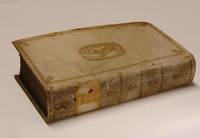
|
|
|
HOMERUS.
Iliadis fragmenta antiquissima cum picturis item scholia vetera ad Odysseam edente Angelo Maio Ambrosiani Collegii doctore Regiarum Galliae Belgii Bavariae et Neapolis Academiarum sodale.
Milan Mediolani Regiis Typis 1819. Large folio. VIIILVI pages; leaves II I-LVIII pages LIX-LXX; 1-164 pages. Calf. 60 x 35 cm Ref: . Hoffmann 2328; Schweiger 1161; Brunet 3282; Ebert 10007; Graesse 3331; Sandys 3241 Details: Back gilt and with 7 raised bands. Boards with gilt borders and a gilt coat of arms in the centre. Marbled endpapers. Nice engraved architectural title with 9 round medaillons 3 of which are portraits of Achilles Homer and Odysseus the others show scenes from the Ilias and Odyssea. One full page specimen of the Greek script; 58 engravings accompanying 58 fragments from a 'Codex Ambrosianus Pictus'. Three sumptuous engraved headpieces one text illustration. Fresh white paper with very broad margins Condition: Upper board detached. Back chafed & damaged. Joint of the lower board cracking but still strong. Boards with some scratches and rubbings. 2 small wormholes in margin of last 4 leaves. Some faint foxing Note: This Homer edition of 1819 consists of four parts 1: A dedication and Angelo Mai's informative introduction 'De codicibus Ambrosianis editoris Prooemium' page I-LVI; 2: 'Iliadis Fragmenta et Picturae' ca. 800 verses with 58 engravings after 6th century illustrations of scenes in the Ilias to which are subjoined 6 pages critical notes of the 'variae lectiones' found in this manuscript page LIX-LXIV; 3: 'Scholia Veterum Grammaticorum ad Homeri Odysseae ex Ambrosianis codicibus 13th century eruta' page LXV-LXX & 1-148; 4: 'Didymi Alexandrini Marmorum et Lignorum quorumvis Mensurae' p. 149/164. � In 1609 the Milanese 'Bibliotheca Ambrosiana' acquired the library of the Italian humanist Gian Vincenzo Pinelli. One of the 800 acquired 'codices' was a 13th century paper manuscript containing scholia on the Ilias. On the pages of that manuscript had been glued for illustration 51 parchment fragments with 58 scenes from the Ilias. After the removal of these pieces of parchment Mai discovered on the reverse of the pictures the original writing about 800 verses of the Ilias in a majuscule that is based on the ancient Roman uncials. These fragments known as the 'Codex Ambrosianus Pictus' or 'Ilias Picta' or in English the 'Ambrosian Iliad' Biblioteca Ambrosiana Cod. F. 205 Inf. were once part of a large-scale illustrated manuscript of Homer's Iliad which was made ca. 500 in Constantinople or Alexandria. Together they are the oldest surviving manuscript illustrations of the Ilias. Angelo Mai was the first to present them to the learned world in this edition of 1819. � Mai collected from different manuscript in the Ambrosian Library also scholia upon the Odyssea made by several ancient grammarians. At the end Mai added also 4 fragments of a text of the first century B.C. grammarian Didymus Alexandrinus 'De lignorum mensuris et marmoribus vel 'Peri t�n marmar�n kai pantoi�n xul�n metr�se�s'' On the measurement of marble and all kinds of wood; their source is the Greek mathematician Heron of Alexandria and the text is now known as Didymus' Fragment 68. B.K. Braswell 'Didymos of Alexandria: Commentary on Pindar . and a critical catalogue of Didymos' Works' Basel 2017 p. 101 � The discovery of the Homeric scenes of the 'Codex Ambrosianus Pictus' and their printed reproduction in 1819 is a landmark of Homeric study. The Italian scholar Angelo Mai 1782-1854 was librarian of the 'Bibliotheca Ambrosiana' at Milan from 1811 till 1819. He published from manuscripts held by his Library the correspondence of Marcus Aurelius and Fronto portions of speeches of Cicero and Symmachus and scholia and illustrations from the famous Ambrosian manuscript of Terentius 1814-1815. From the Library's Greek manuscripts Mai published part of a speech of Isaeus an unknown portion of Dionysius of Halicarnassus 1816 and the illustrated fragments of the Iliad and the scholia on the Odyssea 1819. His best discovery is the Vatican palimpsest with large portions of Cicero's lost treatise 'De Republica' 1822 Provenance: On both boards the gilt stamp of the Scottish 'Society of writers to the Signet' Collation: pi-2pi2; a-o2 chi-23chi2 1 - 41-2 Photographs on request Heavy book may require extra shipping costs hardcover
书商的参考编号 : 21731
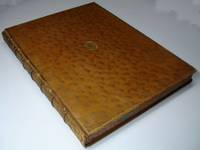
|
|
|
CYRILLUS HIEROSOLYMITANUS.
Tou en hagiois Patros h�m�n Kyrillou hierosolum�n Archiepiskopou Ta heuriskomena panta. S. Cyrilli Archiepiscopi Hierosolymitani Opera quae exstant omnia et ejus nomine circumferuntur ad Manuscriptos codices nec-non ad superiores editiones castigata dissertationibus & notis illustrata cum nova interpretatione & copiosis indicibus. Cura & studio Domni Antonii-Augustini Toutt�e Presbyteri & Monachi Benedictini e Congregatione S. Mauri.
Paris Parisiis Typis Jacobi Vincent 1720. Folio. XVIII p. CCL columns p. CCLI-CCLXVIII; 416 p. columns 417-426 p. 426-472; 22 blank p. Calf 41.5 cm. 'A fundamental edition of one of the most precious treasures of Christian antiquity' Ref: Brunet 2462/63; Hoffmann 1495; Graesse 2317; Ebert 5602. Quasten 3 p. 366 Details: Back with 6 raised bands and a black gilt shield in the second compartment. Woodcut printer's mark on the title depicting within a baroque framework 2 griffins 2 putti and 2 piles of spoils. Some woodcut headpieces. At the beginning of Cyrillus' text a big engraving made by J.B. Scotin depicting an emperor presiding over an assembly. Printed in 2 columns Greek text with parallel Latin translation Condition: Binding scuffed and scratched. Leather on the boards renewed long ago. Front hinge slightly cracking. Paper of 2 pages 'g2 verso' and 'h1 recto' soiled. Some superficial damage by insects to the right lower corner of the lower board. Bookplate on the front pastedown. First leaves thumbed. Occasional old ink underlinings and marginalia. Last blank leaf pasted to the flyleaf Note: Cyril of Jerusalem or Cyrillus Hierosolymitanus born ca. 315 at Jerusalem became in 350 bishop of his hometown which thanked its centrality as a Christian metropolis to its biblical past and an increasing number of holy sites. The bishop of Jerusalem was together with the bishops of Rome Antioch and Alexandria a person of great authority within Christendom. Cyrillus was a defender of the Holy Trinity of the Nicene creed maintaining the doctrinal formula for the 'homoousios'. Cyrillus died in 381. The Roman Catholics venerate him as a Saint so do the Eastern Orthodox Church and the Anglican Church. A series of 24 catechetical lectures catecheses most of which he delivered in the Church of the Holy Sepulchre survive and they are among the most precious treasures of early Christian literature though they also betray Cyrillus' anti-Jewish sentiment. � The works of Cyrillus in this edition of 1720 were edited by the Benedictine of the Maurist Congregation Dom Antoine-Augustin Toutt�e 1677-1718 and published posthumously. They are preceded by his extensive and learned dissertations on the life writings and doctrine of the bishop of Jerusalem. Toutt�e's studies covering circa 140 pages are the first important studies on Cyrillus they consist of 1: 'De vita et rebus gestis S. Cyrilli Hierosolymitani'; 2: 'De scriptis S. Cyrilli ac potissimum Catechesibus'; 3: 'De variis Cyrillianae doctrinae capitibus'. � The collection opens with Cyrillus' 19 i.e 1 18 lectures/catecheses addressed to the candidates looking forward to baptism at the coming Easter p. 1/302 the first of which is the 'Procatechesis' an introductory catechesis p. 1/14. In it Cyrillus greets the neophytes 'you who are to be enlightened' in compassionate manner: 'Vos iam adstat beatitudinis odor o illuminandi' p. 1. He then stresses the gravity of the step which they are about to take and the need for repentance and preparation. The first of the next 18 lectures deals 'with the temper of mind requisite for baptism. It urges us to lay aside all mundane concern forgive personal enemies . and feed the soul by reading the Bible'. Quasten 3364 The second catechesis treats penitence and temptations the 3rd baptism and salvation. The 4th is a summary of the Christian doctrine the 5th treats the nature and origin of faith. The other lectures contain 'expositions of the successive articles of the Jerusalem Creed of which the most important was the baptismal formula used by those who were baptized to confess their faith publicly: 'Credo in Patrem et in Filium et in Sanctum Spiritum et in unum Baptisma poenitentiae' or 'I believe in the Father and in the Son and in the Holy Ghost and in one Baptism of repentance' Catechesis 19 cap. 9. page 309. After these 19 lectures follow 5 so-called 'Mystagogical Catecheses' which were directed to the newly baptized during Easter week. p. 303/332 The first 3 deal with baptism and chrismation confirmation the 4th with the eucharistic doctrine and the 5th with the eucharistic liturgy. The mystagogical lectures are followed by Cyrillus' only surviving homily 'Homilia in paralyticum ad piscinam probaticam jacentem' a sermon on chapter 5 of the gospel of John a story about the paralyzed man at the Pool of Bethesda who was healed by Jesus on a sabbath p. 333/344. A letter of Cyrillus to the emperor Constantius 317-361 A.D. 'De viso Hierosolymis lucidae crucis signo' survives too. p. 345/356. In this letter Cyrillus 'reports about about the miraculous apparition of a great cross of light that was seen from Jerusalem on May 7 351'. Quasten 3367 After this letter are printed some spurious works of Cyrillus 'De occursu Domini' some spurious letters one to and one from Augustinus p. 357/388 and also 'variantes lectiones' and 'praefationes' of earlier editions and the 'praefatio' of bishop Thomas Milles to his Cyrillus edition of 1703 together with his commentary p. 389/416. At the very end a 5 page description of the Church of the Holy Sepulchre at Jerusalem together with an engraved table Provenance: A linoleum cut bookplate of 'P.A. Kasteel'. Petrus Albertus Kasteel 1901-2003 was a wellknown Dutch journalist civil servant and diplomat. He wrote his name also on the front flyleaf. Collation: pi2 a-e4 f-2k2 2l1; A-3F4 3G-3V2 leaf 3V2 blank Photographs on request Heavy book may require extra shipping costs hardcover
书商的参考编号 : 105600
|
|
|
HEPHAESTION.
H�PHAISTI�N�S ALEXANDRE�S EGCHEIRIDION PERI METR�N KAI POI�MATOS. EIS TO AUTO SCHOLIA. Hephaestionis Alexandrini Enchiridion de metris et poemate. Cum scholiis antiquis et animadversionibus Joannis Cornelii De Pauw.
Utrecht Trajecti ad Rhenum Apud Melchior. Leonardum Charlois 1726. Colophon at the end: Trajecti ad Rhenum Typis Petri Muntendam 4to. IV1887 index1 p. Half calf 21 cm Ref: STCN ppn 185828795; Hoffmann 2203; Brunet 5104; Graesse 3243; Ebert 9451 Details: Back rebacked antique style with 5 raised bands and with a red morocco shield in the second compartment. The boards are original and are covered with marbled paper. Woodcut printer's mark on the title depicting the intertwined initials of M.L. Charlois. Edges dyed red Condition: Rebacked antique style. The paper on the boards is worn. Corners bumped. Upper margin of the first 2 leaves slightly waterstained Note: The study of metrics started already in the time of the Sophists. Herodotus knew iambic trimeters and hexameters. Later the Peripatetici and the Alexandrians developed the technical vocabulary and methods to analyse the metrical structure of lyric parts of Greek tragedies and comedies. What we know of ancient metrics was handed down to us by late antique and byzantine grammarians and commentators especially by the Alexandrian scholar Hephaestion second century A.D. whose 'Enchiridion' summarizes ancient knowledge and offers examples from works now lost. With the help of Hephaestion's handbook the Dutch scholar Willem Canter Guilielmus Canterus 1542-1575 rediscovered the metrical responsion in the lyrical parts of the plays of the Greek tragedians Aeschylus Sophocles and Euripides and was able to correct the corrupted text using metrical responsion. 'Die Theorie des Hephaestion hat bis in moderne Darstellungen der Metrik hinein starke Nachwirkung gehabt'. Neue Pauly 5352 'The terms in which he speaks of the metres of Greek verse and their properties have largely remained in use until the present day'. OphuijsenJ.M. van 'Hephaestion on metre' Leiden 1987 p. 3 � Cornelis de Pauw born ca. 1680 in Utrecht was canon of the 'Sint Jan'. He was a classical scholar of some repute and published several editions of Greek and Roman authors Hephaestion Horapollo Anacreon Quintus Smyrnaeus Theophrastus's Characters Phrynichus Aeschylus. By some detractors he was considered to be an 'homme m�diocrement savant' whose ignorance was only exceeded by his impudence. He died in 1749. De Pauw tells us in the short preface that he based his edition on that of the French scholar Hadrianus Turnbebus 'quae nitidissima est' which was published in Paris in 1553. The 'editio princeps' dates from 1526 Florence. De Pauw follows Turnebus 'kata poda' and corrected only some obvious printer's errors. And as the accompanying scholia are often corrupt and displaced and donot offer enough help he decided to add his 'animadversones'. 'Lecturo' p. 2 recto Collation: 2 A-2A4 2B2 Photographs on request hardcover
书商的参考编号 : 130095
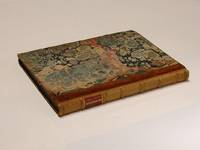
|
|
|
ARISTOPHANES.
ARISTOPHANOUS PLOUTOS. Aristophanis comoedia Plutus. Aiecta sunt scholia vetusta. Recognovit ad veteres membranas variis lectionibus ac notis instruxit et scholiastas locupletavit Tiberius Hemsterhuis.
Harlingen Harlingae Ex officina Volkeri van der Plaats 1744. 8vo. XXIV48425 index3 blank p. Vellum 20 cm Ref: STCN ppn 15383420X; Hoffmann 1260; Dibdin 1306; Moss 197/98; Brunet 1456: '�dition estim�e'; Ebert 1099; Graesse 1208 Details: Greek text accompanied by scholia and commentary. Short title in ink on the back Condition: Vellum age toned and soiled. Small paper label pasted on the back. Front joint partly split. Paper yellowing. Pinpoint wormhole in the lower part of the first 130 p. sometimes nibbling at a letter Note: Of the Greek comic playwright Aristophanes ca. 455-385 BC born in the radical democracy of Athens survive 11 plays. In a less free society his genre became obsolete in his own time and was later replaced by the harmless plays of Menander. 'Aristophanes' comic mode- a dramatic free form with an almost improvisational feel great poetic and linguistic inventiveness highly topical satire public figures being named and personated on stage and obscenity beyond almost any subsequent standard of acceptability'- never again became a major theatrical tradition'. The classical tradition Cambridge Mass. 2010 p. 69 This opinion seems outdated. Aristophanes sounds very much like modern satyric comedy. The 2nd edition of the OCD 40 years older sounds more sympathetic: 'He had a keen eye and ear for the absurd and the pompous; his favoured media are parody satire and exaggeration to the point of phantasy and his favourite targets are men prominent in politics contemporary poets musicians scientists and philosophers'. OCD 2nd ed. p. 113 � Serious scholarly work on the text of Aristophanes begins in the 16th century with Petrus Victorius J.J. Scaliger and his friend Willem Canter. This edition of Aristophanes play Plutus of 1744 was produced by the Dutch classical scholar Tiberius Hemsterhuis 1685-1766 who at 19 became professor at the Athenaeum of Amsterdam. In 1705 Hemsterhuis was promoted to a professorship in Harderwijk and in 1717 he was appointed professor of Greek at the University of Franeker. In 1740 he was finally called to Leiden. Hemsterhuis' Plutus edition a play in which the god of wealth is cured of his blindness and the remarkable social consequences of his new discrimination are exemplified is 'one of the most accurate and critical editions of a Greek writer ever published. It contains the genuine ancient Scholia and the notes are every way worthy of the high reputation of Hemsterhusius. No subsequent editor has presumed on a publication of the Plutus without consulting this masterly performance'. Didbin Gudeman calls the edition even 'epochemachend' A. Gudeman Grundriss der Geschichte der klassischen Philologie Lpz. 1909 p. 202 Hemsterhuis himself is more modest about his 'libellus' it may be small and of little value nevertheless it very well serves the purpose of introducing students to the treasures of Greek. 'sed peridoneus tamen ex quo juvenes humanitatis excolendae cupidi veteres illas atque ab ipsa velut natura profectas Atticorum elegantias percipiant'. Preface p. V The importance of the edition lies in the addition and treatment of the scholia. Hemsterhuis stresses that the scholia are not all the same unius auctoris ejusdem pretii the student should be aware of what is old and what is recent what is genuine and spurious what is valuable and worthless ut ipsi tirones intelligerent in studiorum vestibulo quanti sit vetusta a recentioribus a genuinis spuria aurea a quocumque deterioris metalli genere secerni'. Preface p. XII J.G. Gerretzen'Schola Hemsterhusiana' Nijmegen/Utrecht 1940 p. 88/90 Provenance: Name on the front pastedown: 'L. Rutgers' Collation: -34 A-3S4 leaf 3S3 verso and 3S4 blank Photographs on request hardcover
书商的参考编号 : 130023
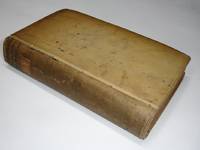
|
|
|
G. W. C Kaye
High Vacua
Longmans Green 1927. Hardcover. Used; Acceptable. No dust jacket. Ex Library. Covers worn. Hinges cracked internally. Illustrated. Spine torn. <p><i><strong>Fast Dispatch. Expedited UK Delivery Available. Excellent Customer Service. </strong></i> <br/><br/>Bookbarn International Inventory #2976362</p> Longmans Green hardcover
书商的参考编号 : 2976362
|
|
|
S. W. Powell
A South Sea Diary
Victor Gollancz 1942. 1st Edition. Hardcover. Used; Acceptable. Edition: 1st Edition. No dust jacket. Ex Library. Rebound. <p><i><strong>Fast Dispatch. Expedited UK Delivery Available. Excellent Customer Service. </strong></i> <br/><br/>Bookbarn International Inventory #3001118</p> Victor Gollancz hardcover
书商的参考编号 : 3001118
|
|
|
FLODER J.
Johannis Floderi in Athenaeo Upsaliensi olim Graecar. Litterar. Professoris et Reg. Acad. Litt. Hum. Stockh. membri Opuscula oratoria et po�tica.
Uppsala Upsaliae Typis viduae directoris Joh. Edman 1791. VIII419121 blank p. Contemporary wrappers 21 cm Note: The historian of classical philology John Edwin Sandys did not think much of Swedish philology up to 1800. Not a few of the Swedish scholars 'were in the habit of writing Greek compositions either in prose or in elegiac or in hexameter verse but they very rarely produced any editions of Greek authors and such authors as they happened to edit were seldom of special importance'. They only deserve credit for continuing to tend and cultivate 'in that northern clime the exotic plant of Greek learning'. Sandys 3348 One of the few scholars Sandys mentions is Johannes Floderus 1721-1789 'who was also an able Latin orator who took a prominent part in no less than 108 Latin disputations and left behind him a large number of 'Opuscula oratoria et poetica' posthumously published in 1791'. Floderus was professor of Greek at the University of Uppsala from 1762. The 'Conspectus voluminis' offers the following parts: 1 Oratio Inaug. ad Prof. Gr. L. 1762; 2 Oratiuncula primae lect. publ. praemissa 1762; 3 Elogium funebre Divo Adolpho Friderico 1771; 4 Parentalia N. Ros�n a Rosenstein facta 1775. 5 Officium Parent. J. Ihre praestitum 1781; 6 Oratio Parent. in memor. C. Aurivilii 1786; 7 Laudatio Funebris C.F. Mennander 1787; 8 Oratio quum Rect. Acad. deponeret 1770; 9 Oration quum Rect. Acad. se abdicaret 1778; 10 Oratio in Promot. Philosoph. 1785; 11 Programmata; 12 Carminum libri duo 98 p.; 13 Index 158 Dissertationum auctoris. At the end is a 11 page list of subscribers Collation: pi4 A-2D8 2D8 verso blank Photographs on request unknown
书商的参考编号 : 130058
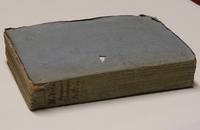
|
|
|
FLORUS.
L.A. Florus cum notis integris Cl. Salmasii et selectissimis Variorum accurante S.M.D.C. Additus etiam L. Ampelius ex Bibliotheca Cl. Salmasii.
Amsterdam Amstelodami Ex officina Elzeviriana 1674. 8vo. XVI588108 index462 blank p. Overlapping vellum 20.5 cm Ref: STCN ppn 842457577; Willems 1490; Berghman 2064; Rahir 1598; Schweiger 2361; Ebert 7683. Spoelder p. 613 Hoorn 2 Details: Prize copy without the prize. 6 thongs laced through both joints. Blind stamped fleurs de lis on the back. Boards with blind double fillet borders in the center of them the coat of arms of the city of Hoorn. Engraved title depicting a throned goddess Roma on a pedestal allegorical figures representing Europe Asia and Africa offer her their treasures; in the foreground Tibur and little Romulus and Remus and their shewolf Condition: Prize gone. vellum age-toned slightly soiled and scratched. All 4 textile fastening ties gone. Front flyleaf gone. Title slightly worn. Name on the front pastedown Note: 'Favourite school-book in the 17th century'. This is the chief work of the Roman historian Lucius Annaeus Florus who lived at the beginning 2nd century AD. It is an abridgement of Roman history with special reference to the wars waged up to the age of Augustus. Florus 'shows a certain literary gift marred however by a strong tendency to rhetoric. His brevity often entails obscurity though he sometimes produces a felicitous epigram. . As an historian he is often inaccurate in both chronology and geography but the work as a whole achieves a limited success as a rapid sketch of Roman military history. It was a favourite school-book in the 17th century'. OCD 2nd ed. p. 442 � This edition is a socalled 'Variorum edition'. It offers a 'textus receptus' which is widely accepted accompanied with the commentary and the annotations of various specialists taken or excerpted from earlier useful normative or renewing editions. Editions like these 'cum notis Variorum' were useful but never broke new ground. The production of these sometimes overloaded editions was the specialty of Dutch scholars of the 17th and 18th century. The compilers seldom were great scholars but often hard working schoolmasters. Their involvement in publishing a new edition was limited to the necessary but ungrateful task of the beast of burden. � This Variorum edition was produced by so the title says S.M.D.C that is by Cornelis Schrevelius who took his doctoral degree in Paris as a Doctor of Medicine in 1627. Hence S.M.D.C. that is Schrevelius Medicus Doctor Cornelis. He taught classics at the Schola Latina at Leiden where he had been raised himself. In 1642 he succeeded his father Theodorus Schrevelius as the rector Moderator of the school. He died in 1664 a few days after having completed an edition of Claudian. He raised at least 11 kids and fell victim to the plague. A.M. Coebergh van den Braak Meer dan zes eeuwen Leids Gymnasium Leiden 1988 p. 47/55 � This edition of 1674 is a reissue of the Elzevier edition of 1660. The commentary of the French scholar Claude Saumaise latinized as Claudius Salmasius 1588-1653 was adopted from the Elzevier edition of 1638 which edition included also the 'editio princeps' of the 'Liber Memorialis' of Lucius Ampelius. Salmamius was since 1631 professor at the University of Leiden Provenance: On the front pastedown in ballpoint: 'Lennart Hakanson' 1939-1987 professor of Latin at the university of Uppsala Collation: 8 AQ-2Z8 3A4 leaf 3A4 blank Photographs on request hardcover
书商的参考编号 : 130055
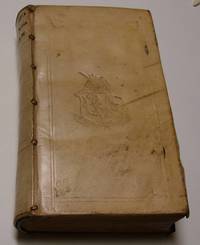
|
|
|
HORATIUS.
Quinti Horatii Flacci Opera. Interpretatione notis & indice illustravit Ludovicus Desprez. In usum Sereniss. Delphini. Accedit Horatii vita et Aldus Manutius De metris horatianis.
Amsterdam Amstelodami Sumptibus Societatis 1695. 8vo. XXIV91414 index p. Vellum 21 cm Ref: STCN 840820828; 'La collection ad usum Delphini' vol. 2 p. 485/93; Schweiger 2405; Graesse 3353; Ebert 10187; cf. Moss 216; cf. Brunet 3318; Spoelder p. 613 Hoorn 2 Details: Prize copy but without the prize. Blindstamped & tooled vellum. Coat of arms of Hoorn on both boards. Frontispiece depicts Apollo playing on his lyre his audience consists of the 9 Muses; in the distance mount Parnassus the home of the Muses and up in the air the winged horse Pegasus. On the upper part of the page the poems of Horace on the lower 3/4 a short 'Latin interpretatio' and 'annotationes' Condition: Vellum slightly soiled & spotted. Prize gone all four silk fastening ribbons also gone. Right lower corner of the first 100 p. very slightly stained Note: The works of the Roman poet Quintus Horatius Flaccus 65-8 B.C. have enjoyed a continuous presence in European culture. His memorable phrases made him the most quoted ancient author and his elegance his moral wisdom humour and tolerance made him favourite reading and suitable for schoolboys. Till well into the 20th century he stood central in school curricula. Already in antiquity Horace's works were widely studied in ancient schools. Occasional references by later authors demonstrate the continuity of this school tradition allthough Christian authors admired his form but distanced themselves from his pagan thoughts. The Carolingian age saw him once again become a school author. Later in the Middle Ages he was next to Vergil the most important school author. Horace is transmitted in around 300 medieval manuscripts. During the Renaissance Horace's fame expanded itself together with humanism throughout Europe. This period saw the beginning of a flood of editions. 'For Neo-latin poetry until modern times and for all the vernacular literature of Europe from the 16th through the 18th centuries Horace provided the dominant model both for private lyrics celebrating wine and love and for public lyrics celebrating affairs of state'. Young poets used Horace to learn the trade. 'Horace's elegant rationalism and moral wisdom and also his disabused and tolerant tone made his poems favorite reading during the Enlightenment'. The Classical Tradition Cambr. Mass. 2010 p. 454/60 � This title was originally published for the education of the Dauphin Delphinus the young crown prince of France the future king Louis XV. Great care was bestowed on the editing and printing of the series of classical authors. 39 editions of Latin authors from Cicero to Ausonius also difficult ones like Festus and Manilius were published by leading or promising French scholars. The editions were also meant for a broad public offering introductions reliable and readable texts easy interpretations and philological educational and historical notes without too much philological niceties or textual criticism. The series was a huge success. This particular edition of Horace was first published in Paris in 1691. Desprez did not spent much effort editing this Horace. 'La critique textuelle sur Horace est relativement conformiste au 17e si�cle; les �l�ments textuelle de base de l'�tablissement du texte restent l'�dition de Lambin et celle d'Heinsius. . Il n'est pas impossible que Desprez ait repris les notes d�j� existentes des �rudits qui s'etaient attel�s � ce travail avant lui et qu'il n'ait pas cherch� � les approfondir mais plut�t � les mettre en forme' 'La collection in usum Delphini' p. 487/88 Occasionally Desprez omitted some 'obscoena' limiting himself to words like 'cunnus'. The commentary can be called accessible extensive and detailed. Desprez' edition saw many reissues well into the 19th century. � Louis Desprez was professor of rhetoric 'au coll�ge Cardinal Lemoine' and edited for the Dauphin series also Juvenal and Persius 1684. � The Horace edition in Delphin Series was a success. The bibliographies mention many reissues. Still this first Dutch edition of 1695 was apparantly not the great success the Amsterdam publisher had hoped for. For this 1695 edition was reissued in The Hague by the publisher Peter van Thol in 1708 the only difference being the title page the rest is exactly the same. The publisher Van Thol apparantly purchased unsold copies of this edition removed the title inserted a title with his own imprint and brought it on the market as a new title Provenance: Small stamp on the front flyleaf of 'De Vletter R. Vinkeleskade 18 Amsterdam' Collation: -8 2-4 A - 3M-8 Photographs on request hardcover
书商的参考编号 : 130082
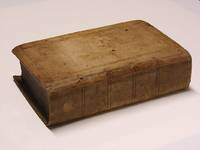
|
|
|
HORATIUS. WAGNER H.
Q. Horatii Flacci Carmina collatione scriptorum graecorum illustrata ab Henrico Wagnero. Praefatus est Christ. Adolphus Klotzius.
Halle Halae Magdeburgicae Impensis Orphanotrophei 1770. 8vo. VIIIXXII136 p. Contemporary boards 20 cm Ref: not yet in VD18; Schweiger 2461; Ebert 10280; Brunet 6 no. 12507 Details: Woodcut printer's mark on the title Condition: Binding scuffed and spotted. Owner's inscriptions written on the front endpapers. First and last leaves browning the rest is yellowing Note: The works of the Roman poet Quintus Horatius Flaccus 65-8 B.C. have enjoyed a continuous presence in European culture. His memorable phrases made him the most quoted ancient author. Till well into the 20th century he stood central in school curricula. Earlier in the Middle Ages he was next to Vergil the most important school author. Horace is transmitted in around 300 medieval manuscripts. The Renaissance saw the beginning of a flood of editions. 'For Neo-latin poetry until modern times and for all the vernacular literature of Europe from the 16th through the 18th centuries Horace provided the dominant model both for private lyrics celebrating wine and love and for public lyrics celebrating affairs of state'. Young poets used Horace to learn the trade. 'Horace's elegant rationalism and moral wisdom and also his disabused and tolerant tone made his poems favorite reading during the Enlightenment'. The Classical Tradition Cambr. Mass. 2010 p. 454/60 � The style of many of Horace's poems displays polished techniques derived from Hellenistic Greek poetry. In his odes Horace claims the early Greek lyric poets Sappho and Alcaeus as his models and to have introduced into Latin poetry their style and rythms. The German jurist Heinrich Wagner Henricus Wagnerus 1747-1814 tried in his 'Horatii Flacci Carmina collatione' to locate the Greek sources of Horace's poetry. For Wagner see 'Killy Literaturlexikon' 2nd edition 2011 vol. 12 p. 73/74 Provenance: On the front pastedown: 'Schol. Gustrov. acc. 1816'. This school is the 'Domschule' at G�strow in Northern Germany a 'schola latina' founded in 1552 and later transformed into a Gymnasium. In 1942 the school was merged with the local Realgymnasium. Its new name was 'Vereinigte John-Brinckman-Schule und Domschule'. Nowadays it is called the 'John-Brinckman-Gymnasium'. � On the flyleaf: 'No. 58 May 1788'. � On the same leaf in a different hand: first an erased name and then: 'Hic liber a Professore nostro viro generosissmo XIVa Cal. Mart. 1802 mihi est datus'. Car. Piper' Collation: 4 -28 -H8 I4 Photographs on request hardcover
书商的参考编号 : 130083

|
|
|
DIONYSIUS HALICARNASSENSIS.
Dionysii Halicarnassei Scripta quae extant omnia Historica et Rhetorica; Nunc primum universa latine edita; illa quidem olim per Gelenium; sed ita modo interpolata per Frideric. Sylburgium ut pene nova versio dici queat.
Hanau Hanoviae Typis Wechelianis apud Haeredes Ioannis Aubrii 1615. 8vo. XVI718174 indices4 blank p. Half roan. 18.5 cm Ref: VD17 1:060748B; Hoffmann 1585; Graesse 2400 Details: This is the first volume of a two volume set. This volume contains the Latin translation of the 'Antiquitates Romanae'. There is no Greek text. The lacking volume contains Dionysius' rhetorical works. Wechel's woodcut printer's mark on the title depicting the winged horse Pegasus gracefully arched over a caduceus and 2 intertwined cornucopiae Condition: Red back faded and rubbed. Boards scuffed corners bumped. Name cut from the blank upper margin of the title. 2 ownership entries on the title. Endpapers foxed. Paper yellowing Note: The 'Antiquitates Romanae' of the Greek rhetor and historian Dionysius Halicarnassensis who came to Rome ca. 30 B.C. to teach rhetoric and who spent there at least 22 years or longer are little known and little read nowadays. His work on literary criticism still is of importance for it shows that he was an excellent critic with good taste great knowledge and a subtle judgement. As historian however he is almost forgotten. H.J. Rose's summary of the 'Antiquitates Romanae' explains its weakness: 'He writes as might be expected in the rhetorical tradition and as a result his book is nearly worthless as history devoting much space to elaborate retelling to the late and artificial mythology of Rome. For this very reason however it is of some service to students of Roman antiquities for it preserves a good many interesting facts concerning the earliest civil and religious institutions. We have 11 books left with excerpts from 9 more carrrying the narrative down to 271 B.C.' H.J. Rose 'A handbook of Greek literature' London 1965 p. 399 The historian Dionysius of Halicarnassus enjoyed however great authority until the 18th century. He was thought to be superior to the other Roman historians who wrote about the early history of Rome. His influence on the 'artes historicae' of the Renaissance is great. He was admired by Bodin Vossius and Scaliger. Then the spirit of the Enlightenment made his poetic conception of history obsolete. Scholars like the Dutch ancient historian Perizonius made mincemeat of him and burried him in the dust of oblivion. The 'Altertumswissenschaft' of the 19th century held him also in low esteem and he was degraded to a 'Graeculus' an insignificant Greek. The last decades seem to be friendlier for Dionysius. Bowersock Gabba. He now has simply become a witness whom scholars start to ask other questions. � The Bohemian classical scholar Sigismund Gelenius or Zikmund Hrub� 1497-1554 produced editions of Callimachus Aristophanes the Planudean Anthology Origenes and the 'editio princeps' of several minor Greek geographers. Circa 1524 he ended up in Basel where he worked as 'lector' translator and critic in the famous Publishing House of Frobenius. Neue Deutsche Biographie 6 1964 p. 173 He declined lucrative professorships. In Basel he published in 1549 his Latin translation of the 'Antiquitates Romanae' of Dionysius Halicarnassensis for the first time. � 'A thorough knowledge of Greek considerable critical acumen and an intelligent application of great powers of work were the main characteristics of Friedrich Sylburg 1536-1596'. Sandys 2 p. 270 In 1583 he settled in Frankfurt working there for 8 years for the press of Wechel. He edited at Frankfurt the complete Aristotle and Dionysius Halicarnasensis. The last work was published by the firm of Wechel in 1586 and it included also the Latin translation of Gelenius emended by Sylburg. This edition of 1615 is a reissue of the Latin translation of 1586 Provenance: On the title: 'Sum R. Lubbaei Wibelsb. 1648 2 julii'. This book was once the property of Richard Lubbaeus of Wibelsburen in 'Ostfriesland' near Emden 1580/85-1651. He was rector of the 'Schola Latina' of the Dutch city Bergen op Zoom and was well versed in Latin Greek and Hebrew. He is the author of numerous Neolatin poems for instance for emblem books. Van de Aa 11673; for Wibelsburen see Wikipedia 'Wiegboldsbur' � The other inscription on the title of the same hand is illegible. It seems to refer to the donator of the book. � On the pastedown in the rear in old ink: 'David' followed by something like 'Tileretier' or 'Helvetier' Collation: -28 A-P8 Y8-2O8 Q8-X8 2P8-3K8 leaf 3K6 & 3K8 blank The gatherings Q t/m X p. 241 -336 have erroneously been bound after 2O8 Photographs on request hardcover
书商的参考编号 : 130047
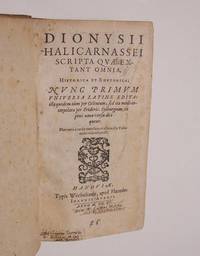
|
|
|
Dennis E. Jackson
EXPERIMENTAL PHARMACOLOGY AND MATERIA MEDICA. SECOND EDTIION. WITH 892 ILLUSTRATIONS INCLUDING 55 COLOR PLATES
St. Louis: Mosby 1939. Hardcover. Used; Good. No dust jacket. <p><i><strong>Fast Dispatch. Expedited UK Delivery Available. Excellent Customer Service. </strong></i> <br/><br/>Bookbarn International Inventory #2886020</p> St. Louis: Mosby hardcover
书商的参考编号 : 2886020
|
|
|
Claire Lee Purdy Tchaikovsky
STORMY VICTORY : The Story of Tchaikovsky
Julian Messner Inc. 1942. Hardcover. Used; Good. No dust jacket. Ex Library. Wear to extremities. <p><i><strong>Fast Dispatch. Expedited UK Delivery Available. Excellent Customer Service. </strong></i> <br/><br/>Bookbarn International Inventory #2953637</p> Julian Messner, Inc. hardcover
书商的参考编号 : 2953637
|
|
|
Pippard A J Sutton & Pritchard Laurence
Aeroplane Structures
London Longmans Green & Co 1919. First Edition. Hardcover. Used; Acceptable. Edition: First Edition. No dust jacket. Covers worn. Illustrated Plates. Spine worn. Wear to extremities. Hinges cracked internally. <p><i><strong>Fast Dispatch. Expedited UK Delivery Available. Excellent Customer Service. </strong></i> <br/><br/>Bookbarn International Inventory #2923112</p> London, Longmans, Green & Co hardcover
书商的参考编号 : 2923112
|
|
|
William Knight
MEMOIR OF HENRY VENN
Seeley Jackson And Haliday 1882. Hardcover. Used; Acceptable. Ex Library. No dust jacket. faded internally good hinges weak wear to head & tail of spine. <p><i><strong>Fast Dispatch. Expedited UK Delivery Available. Excellent Customer Service. </strong></i> <br/><br/>Bookbarn International Inventory #2728912</p> Seeley, Jackson And Haliday hardcover
书商的参考编号 : 2728912
|
|
|
Paget Stephen
AMBROISE PARE AND HIS TIMES 1510-1590.
G P Putnams Sons 1897. 1st. Hardcover. Used; Good. Edition: 1st. No dust jacket. Ex Library. Previous owners inscription. Wear to extremities. <p><i><strong>Fast Dispatch. Expedited UK Delivery Available. Excellent Customer Service. </strong></i> <br/><br/>Bookbarn International Inventory #2944088</p> G P Putnams Sons hardcover
书商的参考编号 : 2944088
|
|
|
GROEN VAN PRINSTERER G.
Platonica prosopographia sive expositio judicii quod Plato tulit de iis qui in scriptis ipsius aut loquentes inducuntur aut quavis de causa commemorantur.
Leiden Lugduni Batavorum Apud H.W. Hazenberg juniorem 1823. 8vo. XV12388 theses p. Contemporary boards 22 cm Dissertation University Leiden The Dutch politician and historian Guillaume Groen van Prinsterer 1801-1876 was a devout Christian lifelong member of the Dutch Reformed Church the state church of the Netherlands. He lead the evangelical renewal movement thriving at the time the European Continental counterpart to the Second Great Awakening known in the Netherlands as the 'Reveil'. Groen ardently opposed the liberal politician Thorbecke whose principles he denounced as ungodly and revolutionary i.e. inspired by the French Revolution. Groen played as a political writer and a member of the Second Chamber of Parliament a prominent role in Dutch home politics. As the leader of the protestant anti-revolutionary movement he gradually created the ideological basis on which after his death in 1879 Abraham Kuyper founded the 'Anti Revolutionary Party' Anti-Revolutionaire Partij Source Wikipedia hardcover
书商的参考编号 : 130081
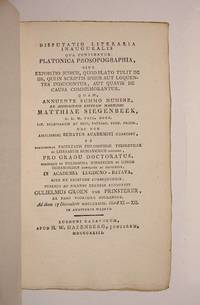
|
|
|
BETOUW J. IN DE.
Annales Noviomagi Oppidi olim Batavorum hodie primariae Gelrorum Civitatis.
Nijmegen Noviomagi Ex typographia Ahasu�ri van Goor filiique 1790. 4to. IV2444 index p. Contemporary wrapppers 22 cm Ref: STCN ppn 190386835; 1 Gheprint te Nymeghen 45.1 Details: Uncut Condition: Wrappers chafed. Paper on the back gone. Paper of 9 gatherings browned. Waterstain sometimes almost invisible in the upper inner corner Note: The city of Nijmegen in the Dutch province of Gelderland is one of the oldest cities in the Netherlands. In the first century BC the Romans built a military limes-camp on a place of great strategic value because of the surrounding hills which gave a good view over the Rhine valley. By 69 a village called 'Oppidum Batavorum' had formed near the Roman camp where 'Legio X Gemina' was stationed. The settlement around the camp received in 98 A.D. Roman city rights. In 104 the Emperor Trajan renamed the town 'Ulpia Noviomagus Batavorum' better known as 'Noviomagus'. In the 8th century Nijmegen was part of the empire of Charlemagne. The Emperor of the Holy Roman Empire Fredericus II granted Nijmegen city rights in 1230. In 1364 Nijmegen became part of the Hanseatic League. During the Eighty Year's War of Independence a revolt against the souvereign of the Netherlands the King of Spain which lasted from 1568 till 1648 the city belonged to the Republic of United Provinces and had to endure multiple sieges. Source Wikipedia � The Annals of Nijmegen were published anonymously and cover its history up to 1790. The author is the local historian and collector of antiquities Johannes in de Betouw 1732-1820 who was a descendent of the archaeologist Johannes Smetius Johannes Smith 1590 - 1651. Smetius broke with his work on Nijmegen new ground for the history of the Netherlands and with him starts the provincial Roman archaeology in the Netherlands Provenance: The provenance seems to indicate Nijmegen. On the inside of the frontcover: 'J.E. v. Lijnden' member of an old Nijmegen-family Collation: pi2 A-2H-4 Photographs on request unknown
书商的参考编号 : 130088
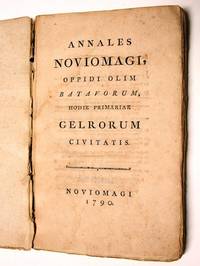
|
|
|
HARLES ThChr. h. Ch
Theophili Christophori Harles Brevior Notitia litteraturae romanae in primis scriptorum latinorum. And: Supplementa I II & III ad Breviorem Notitiam litteraturae romanae in primis scriptorum latinorum continuavit Carol. Frider. Henr. Kl�gling
Leipzig Lipsiae In Libraria Weidmanniana 1789 - 1817. 8vo. 4 volumes in 3: XXVI796151 blank; XII5311 blank; XII552; X362 p. 18 cm Ref: Graesse 3212; Ebert 2989 see Ebert 2990 where Harles' bibliographic work is completely burned to the ground and where the duties of a real bibliographer are explained; Schweiger 2 p. VIII Details: Ad volume 1: volume 1 is a contemporary plain 'Pappband' the cover is worn at the extremities. Stamp on the title and a bookplate on the front pastedown. Ad volumes 2 and 3: the 2 volumes with the Supplementa III & III are bound in 3/4 calf and have a gilt coat of arms on the boards. The bindings of both Supplement volumes have sadly enough been plasticized. Some foxing paper yellowing Note: The German classical scholar historian of ancient literature and bibliographer Gottlieb Christoph Harles later in life Harle� 1738-1815 is the editor of a great number of hastely produced and now forgotten school editions of classical authors Aristophanes Plutus & Nubes Theocritus Bion and Moschus Demosthenes De corona Aristoteles De Poetica Julianus Apostata Caesares Ovidius Tristia et Epistulae ex Ponto Valerius Flaccus Cicero Verrinae De oratore Epistulae selectae Cornelius Nepos Sallustius Quintilianus Aurelius Victor Eutropius. His best known work was the editing of the 4th edition of the 'Bibliotheca graeca' of J. A. Fabricius in 12 volumes the first of which appeared in 1790 and the last in 1809. The set was reprinted by Olms in Hildesheim 1666/70 Provenance: Volume 1: Bookplate on the front pastedown: 'Bibliothek des Herzoglichen-Karls-Gymnasiums Bernburg'. On the bookplate also a stamp: 'Erweiterte Oberschule 'Karl Marx' Bernburg Lehrerb�cherei'. On the title a round stamp: 'Herzogl. Karls-Gymnasium Lehrerbibliothek Bernburg'. � Volumes 2 & 3: gilt coat of arms of the 'Society of Writers to the Signet' on the boards Heavy book may require extra shipping costs hardcover
书商的参考编号 : 100322
|
|
|
Bernadin De Saint pierre
Paul and Virginia
William P. Nimmo. 1874. Hardcover. Used; Good. No dust jacket. Previous owners inscription. Embossed decorated front cover with an inlaid colour image of subjects together with birds as is the coloured frontispiece. Front inner gutter is slightly split. Corners softened. Text is clean. <p><i><strong>Fast Dispatch. Expedited UK Delivery Available. Excellent Customer Service. </strong></i> <br/><br/>Bookbarn International Inventory #2911765</p> William P. Nimmo. hardcover
书商的参考编号 : 2911765
|
|
|
Cross Stitch Collectibles
Fractal 638: Fractal cross stitch pattern
2017-08-01. Good. Ships with Tracking Number! INTERNATIONAL WORLDWIDE Shipping available. May not contain Access Codes or Supplements. May be re-issue. May be ex-library. Shipping & Handling by region. Buy with confidence excellent customer service! unknown
书商的参考编号 : 1975890124 ???????? : 1975890124 9781975890124
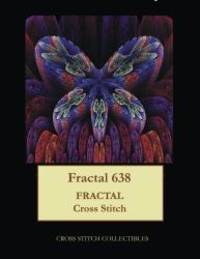
|
|
|
Cross Stitch Collectibles
Fractal 638: Fractal cross stitch pattern
2017-08-01. New. Ships with Tracking Number! INTERNATIONAL WORLDWIDE Shipping available. May be re-issue. Buy with confidence excellent customer service! unknown
书商的参考编号 : 1975890124n ???????? : 1975890124 9781975890124
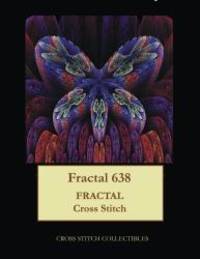
|
|
|
House of Collectibles
Beckett Baseball Card Price Guide No 19
1997-04-01. Good. Ships with Tracking Number! INTERNATIONAL WORLDWIDE Shipping available. May not contain Access Codes or Supplements. May be re-issue. May be ex-library. Shipping & Handling by region. Buy with confidence excellent customer service! unknown
书商的参考编号 : 1887432264 ???????? : 1887432264 9781887432269

|
|
|
PALINGENIUS.
Marcelli Palingenii Stellati Poetae Zodiacus vitae id est de hominis vita studio ac moribus optime instituendis libri XII. Nunc demum ad exemplaria primaria sedulo castigati centenis aliquot mendis expurgati aliisque accessionibus aucti.
Rotterdam Rotterodami Apud Joannem Hofhout 1722. 8vo. XVI including frontispiece407;47 index2 blank p. Calf 15.5 cm Details:.Back gilt and with 5 raised bands. The frontispiece designed and executed by Jan Goeree depicts an allegorical scene which may refer to passages in the second and sixth book of the 'Zodiacus Vitae' called Taurus and Virgo. It shows a laureated woman Poetry who shakes hands with death and at the same time clings with her left arm to a bust of the virtuous goddess of wisdom Athena. Her feet rest on a bag of gold and a scepter. Next to her stands a winged putto scourge at hand who reveals gold and other treasures of the church that lay hidden below a piece of cloth. Above them on a monument the wellknown scene of Hercules on the crossroads where he meets two women personifications of Virtue and Vice. They both advice Hercules to follow the road they show him. Virtue depicted here as Athena points at a narrow rocky and steep path at the end of which he will find a reward. Vice who is stripped to the waist offers Hercules pleasure crowns and wealth; she points at the easy road. The message is clear the highest good can not be found in wealth and profane goods but in virtue combined with wisdom. At the end of the sixth book Virgo the poet concludes having considered the endless miseries of humankind that we should not fear death but that we must embrace her/him as a safe haven. The woodcut printer's mark shows the intertwined initials of the publisher Johannes Hofhout. The title is printed in red and black. Each of the 12 songs is preceded by a useful synopsis Condition: Binding scuffed. Tip at the head of the spine worn away. Gilt on the back fading. Front joint cracked still strong but showing some small damage. Bookplate on the front pastedown. Endpapers worn and yellowing. Some old ink underlinings Note: The real name of the Italian neolatin poet Marcello Palingenio Stellato or in Latin Marcellus Palingenius Stellatus was in 1725 revealed by I. Facciolati in a letter to the German bibliographer J.A. Fabricius. Marcello Palingenio is an anagram for the name of the Italian courtier Pier Angelo Manzolli born to a humble family in La Stellata near Ferrara between 1500 and 1503. He died before 1558. Recent research Bacchelli 1985 points in a completely different direction. On the basis of indications in the privilege for the printing of the Zodiacus granted in Venice in 1535 to one Marcellus Stellato Neapolitanus it is thought that Marcellus may have been born in Campania and that his real name was Marcello Stellato or Stellati a family name attested in area of Campania thus denying the attribution of the poem to Pier Angelo Manzoli. A weak point is that the appellation 'Palingenio' is here hard to explain. Anyway of the author's life little is known. It is assumed that he was a medical doctor. He was at one point suspected of heterodoxy perhaps because he was a member of the Calvinist circle of Renata d'Este. After his death his bones were dug up following a process of heresy under pope Paulus III and burned at the stake. A Vatican codex which includes documents of the Congregation of the Index of the years 1571-90 informs us that the unearthing of Marcello'nihil credens neque divinitatem Christi' took place in Cesena without however indicating the date while in November 1558 the Bolognese Jesuit Francesco Palmio informed his general G. Lainez that his body was publicly exhumed and burned because of certain heretic books Palingenius had composed. The cause of this exhumation may well have been his 'Zodiacus Vitae' a poem in 12 songs 9939 hexameters each song taking its name from one the twelve signs of the Zodiac. It was written between 1520 and 1534 and was dedicated to Ercole II d'Este. These songs do not form a coherent unity and contain a variety of didactic moralistic metaphysical astronomical and frequently satirical passages. The work was placed on the Index in 1558; and perhaps because of this in addition to its intrinsic qualities and its attacks upon the Catholic clergy it was widely read and admired in Protestant countries. In England it was even used as a school text both in Latin and English. It was imitated in and translated into several languages. The main theme is the 'highest good' and around this are woven other secondary themes. There are contradictions repetitions and none of the questions dealt with is original. Yet the Zodiacus is a characteristic and interesting work for its dealing with important philosophical questions and the author's noble intent to offer the reader a poetic code of rule how to live wisely. Its literary value lies in its ornate style and the freedom with which it treats the Latin language. Most importantly the poem shows traits of true and heartfelt poetry as found in some particularly sharp satiric attacks upon the clergy in certain similes and in outpourings of real pessimism. Source: Dizionario Biografico degli Italiani - Volume 69 2007 and Enciclopedia Italiana 1934 Provenance: On the front pastedown the armorial bookplate of 'The Right Honorable Sir John Trollope Bar-t. M.P.' Probably Sir John Trollope 1800-1874 7th Baronet of Casewick in the county of Lincoln and created Baron Kesteven in 1868. He was a conservative politician and M.P. for Lincolnshire South. See Wikipedia 'John Trollope 1st Baron Kesteven' and 'Trollope Baronets' Collation: pi1 frontispiece 8 minus leaf 1; A-2C8 2D-2G4 2H4 leaf 2H4 is a blank and located between the leaves 2H1 and 2H2 because of a binder's error Photographs on request hardcover
书商的参考编号 : 120288
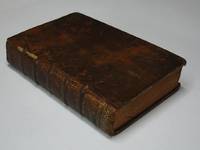
|
|